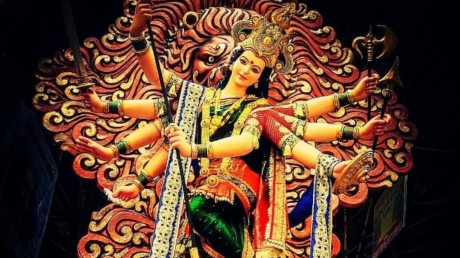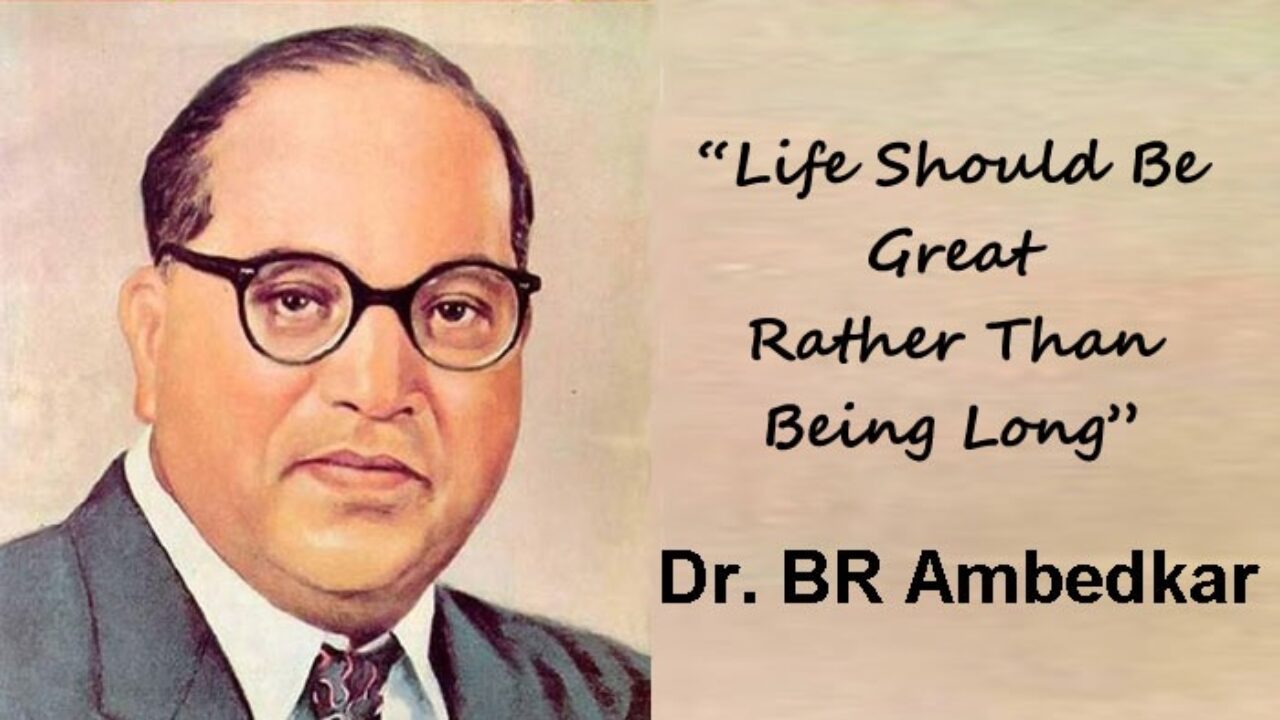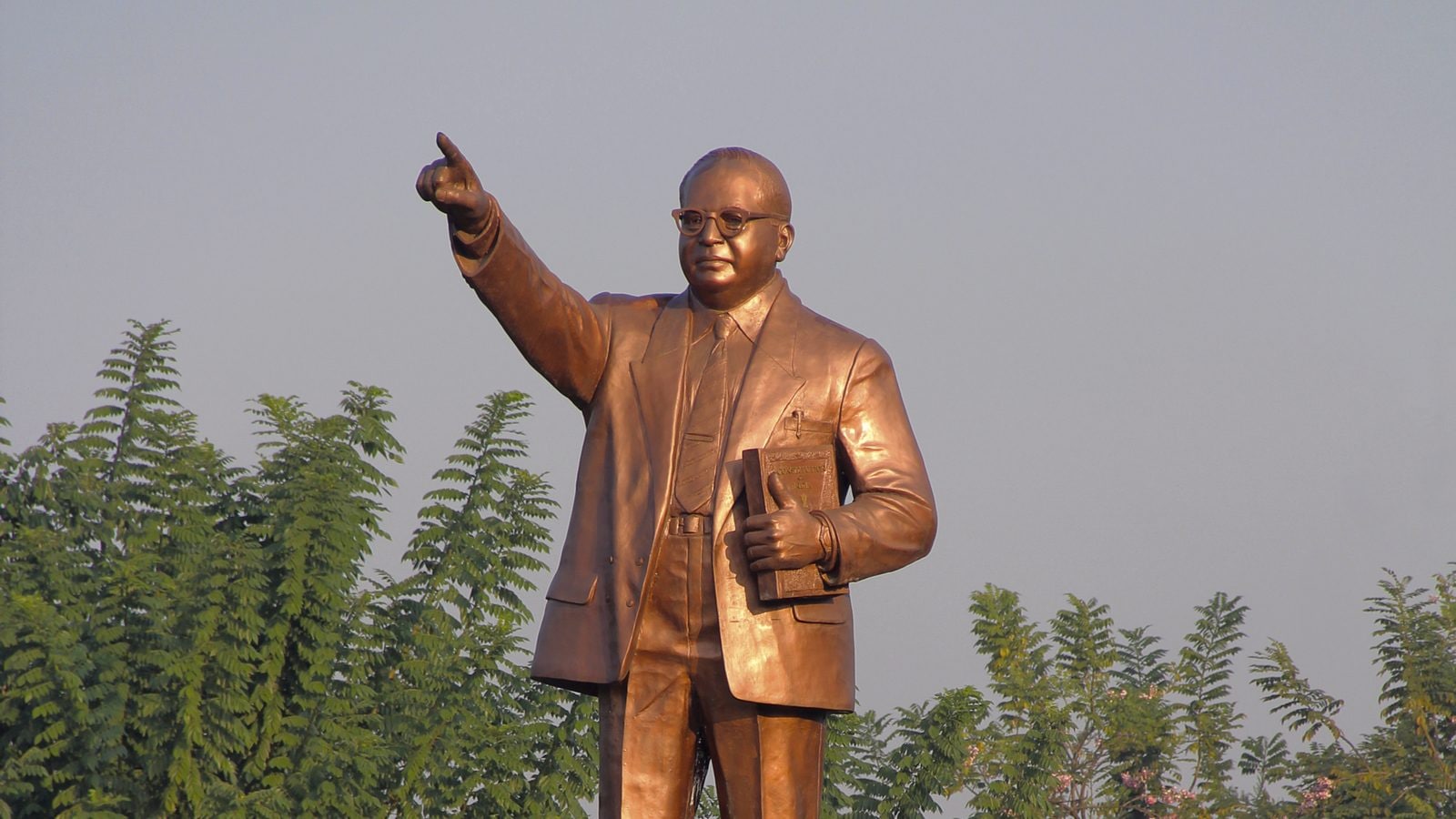T
Procrastination is a common challenge that many individuals face, preventing them from reaching their full potential and achieving their goals. It's a habit that can be frustrating, demotivating, and detrimental to personal and professional success. However, overcoming procrastination is possible with the right strategies and mindset. In this comprehensive guide, we will explore effective techniques and practical tips to help you conquer procrastination, boost your productivity, and reclaim control over your time and tasks.

-
Understand the Root Causes: To overcome procrastination, it's important to delve into its underlying causes. It can stem from various sources, such as fear of failure, perfectionism, lack of motivation, overwhelm, or poor time management. Reflect on your own patterns and identify the specific reasons behind your procrastination tendencies. By understanding the root causes, you can develop targeted strategies to address them and break free from the cycle of delay.
-
Set Clear and Meaningful Goals: Goal setting is an effective tool for combating procrastination. Clearly define your short-term and long-term goals, ensuring they are specific, measurable, achievable, relevant, and time-bound (SMART). Break down your goals into smaller, manageable tasks that are easier to tackle. By having a clear direction and purpose, you can increase your motivation and reduce the tendency to put off tasks.
-
Develop Effective Time Management Skills: Procrastination often arises from poor time management. Learn to prioritize tasks based on importance and urgency. Use techniques like time blocking or creating to-do lists to allocate dedicated time slots for specific activities. Set realistic deadlines and hold yourself accountable. Additionally, consider the 2-Minute Rule, which states that if a task takes less than two minutes, do it immediately rather than postponing it. By managing your time effectively, you'll reduce the opportunities for procrastination to take hold.
-
Overcome Perfectionism and Fear of Failure: Perfectionism and fear of failure are common drivers of procrastination. Embrace the concept of progress over perfection. Understand that taking imperfect action is better than not taking action at all. Focus on the process and learning from mistakes rather than being fixated on flawless outcomes. Cultivate a growth mindset that views setbacks as opportunities for growth. By reforming failure as a stepping stone to success, you'll be more motivated to take action and overcome procrastination.
-
Break Tasks into Smaller Steps: Large, overwhelming tasks can be a breeding ground for procrastination. Break them down into smaller, more manageable steps. This approach reduces the sense of overwhelm and makes the tasks feel more approachable. Celebrate each small milestone achieved along the way, as it boosts motivation and provides a sense of progress.
-
Utilize Productivity Techniques: Explore productivity techniques that can help you combat procrastination. The Pompadour Technique, for example, involves working in focused bursts of time followed by short breaks, creating a sense of urgency and enhancing productivity. Another technique is the "Eat That Frog" method, where you tackle the most challenging task first thing in the morning, gaining momentum and reducing the likelihood of procrastination throughout the day.
-
Cultivate a Supportive Environment: Surround yourself with individuals who inspire and motivate you. Share your goals and progress with supportive friends, family, or colleagues who can provide encouragement and accountability. Consider finding an accountability partner who shares similar goals, and regularly checks in with each other to ensure progress and hold each other accountable.
Conclusion: Procrastination is a habit that can be overcome with the right strategies and mindset. By understanding the root causes, setting clear goals, and practicing effective time management, you can break free from procrastination's grip and unlock your productivity potential. Embrace imperfection, confront the fear of failure, and focus on progress rather than flawless outcomes. Remember to break tasks into smaller steps, utilize productivity techniques like the Pompadour Technique or "Eat That Frog" method, and create a supportive environment that fosters motivation and accountability.
For years, chocolate has been demonized as a diet-buster. But new research suggests that eating chocolate in moderation may actually help you lose weight.

A study published in the journal "Nutrition and Metabolism" found that people who ate dark chocolate for two weeks lost more weight and body fat than those who didn't eat chocolate. The study participants who ate chocolate also had lower levels of insulin and inflammation, two factors that can contribute to weight gain.
Another study, published in the journal "Appetite," found that people who ate dark chocolate for four weeks had a greater increase in fullness and a decrease in appetite than those who didn't eat chocolate.

So why does chocolate seem to help with weight loss? There are a few possible explanations.
First, chocolate contains flavones, which are antioxidants that have been shown to have a variety of health benefits, including improving blood flow and reducing inflammation. Flavonol may also help to boost metabolism and promote weight loss.
Second, chocolate contains fiber, which can help you feel full and satisfied after eating. Fiber also helps to slow down the absorption of sugar into the bloodstream, which can help to prevent spikes in insulin levels and subsequent cravings.
Finally, chocolate contains magnesium, a mineral that is essential for many bodily functions, including regulating blood sugar levels. Magnesium deficiency has been linked to weight gain, so eating chocolate may help to prevent this.
Of course, it's important to note that chocolate is still a calorie-dense food, so it's important to eat it in moderation. A good rule of thumb is to stick to one to two ounces of dark chocolate per day.
If you're looking for a healthy way to enjoy chocolate, look for dark chocolate that is at least 70% cocoa. Dark chocolate contains more flavones than milk chocolate, and it's also lower in sugar and calories.
So go ahead and indulge your chocolate craving—just do it in moderation!
How to Enjoy Chocolate in Moderation
Here are a few tips for enjoying chocolate in moderation:
- Choose dark chocolate that is at least 70% cocoa.
- Limit yourself to one to two ounces of chocolate per day.
- Eat chocolate as part of a healthy meal or snack.
- Pair chocolate with fruits or nuts to add fiber and protein.
- Avoid eating chocolate late at night, as it can interfere with sleep.
If you follow these tips, you can enjoy chocolate without sabotaging your weight loss goals.
Conclusion
The research on chocolate and weight loss is still in its early stages, but the results so far are promising. If you're looking for a healthy way to indulge your chocolate craving, dark chocolate may be a good option for you. Just be sure to eat it in moderation and as part of a healthy diet.

Chaitra Navratri is a Hindu festival that is celebrated for nine days during the Hindu month of Chaitra, which usually falls in March or April. This festival is celebrated with great enthusiasm and devotion by Hindus all over the world, and it marks the beginning of the Hindu New Year.
Navratri means 'nine nights' in Sanskrit, and during this festival, devotees worship the nine forms of the goddess Durga, also known as Navadurga. The nine forms of Durga are Shailaputri, Brahmacharini, Chandraghanta, Kushmanda, Skandamata, Katyayani, Kalaratri, Mahagauri, and Siddhidatri. Each form of Durga represents a particular attribute or quality and is worshipped accordingly.

The first day of Navratri is known as Ghatasthapana, which marks the beginning of the nine-day festival. On this day, a pot filled with water is placed in the puja room and decorated with mango leaves and a coconut. This post is considered to be a symbol of the goddess Durga, and it is worshiped throughout the nine days of the festival.

The first three days of Chaitra Navratri are dedicated to Goddess Durga, who is worshipped as the embodiment of power and energy. The next three days are dedicated to Goddess Lakshmi, the goddess of wealth and prosperity. The last three days are dedicated to Goddess Saraswati, the Goddess of knowledge and wisdom.
During Navratri, devotees observe fasts, perform pujas, and offer prayers to the goddess Durga. Many people also choose to refrain from consuming alcohol and non-vegetarian food during this period. It is believed that by observing these rituals, devotees can attain spiritual purification and can receive blessings from the goddess.
Apart from its religious significance, Chaitra Navratri also holds cultural and social importance. People decorate their houses with flowers and lights, and women wear new clothes and jewelry. Many communities organize Garba and Dandiya Raas dances during Navratri, where people dance to the beat of traditional music and celebrate the festival with great zeal and enthusiasm.
On the eighth day of Navratri, which is known as Ashtami, young girls are worshiped as embodiments of the goddess Durga. This day is also known as "Kanya Pujan," and it is believed that by worshiping young girls, one can receive the blessings of the goddess Durga.
On the ninth day of Chaitra Navratri, devotees worship the ninth form of Goddess Durga, known as Siddhidatri. The word "Siddhi" means "perfection" or "success," and "Datri" means "the giver." Goddess Siddhidatri is believed to be the ultimate giver of boons and blessings. She is also known as Adi Shakti, the original power or energy that created the universe.
The ninth and final day of Navratri is known as Navami, and it is considered to be the most important day of the festival. On this day, devotees offer prayers to the goddess Durga and seek her blessings. The festival culminates with the immersion of the pot, which is a symbol of the goddess Durga.
In conclusion, Chaitra Navratri is a festival that is celebrated with great devotion and enthusiasm by Hindus all over the world. It is a time to seek the blessings of the goddess Durga and to attain spiritual purification through fasting, prayer, and other rituals. This festival is a reminder of the power of the goddess, and of the importance of devotion and faith in our lives.

IBM (International Business Machines Corporation), nicknamed Big Blue, is an American multinational technology corporation headquartered in Armonk, New York and present in over 175 countries. IBM produces and sells computer hardware, middleware and software, and provides hosting and consulting services in areas ranging from mainframe computers to nanotechnology.
On Monday (1st May 2023), International Business Machines Corp. (IBM) CEO Arvind Krishna told Bloomberg that the company intends to pause or slow hiring on roles it believes could be entirely outsourced to AI. Krishna estimated that the adoption of AI could replace nearly 30% of its workforce, amounting to 7,800 jobs.
This is not the first time that AI has been used to replace human jobs. In fact, many jobs are at risk of being replaced by AI in the future.
According to a report by McKinsey Global Institute, up to 800 million jobs could be lost worldwide by 2030 due to automation. The report also states that up to 375 million workers may need to switch occupational categories and learn new skills.
The jobs most at risk of being replaced by AI are those that involve routine tasks such as data entry, bookkeeping, and assembly line work. However, AI is also being used in more complex tasks such as medical diagnosis and legal research.
It is important for workers to stay informed about the impact of AI on their jobs and be prepared for changes in the job market. This includes learning new skills and being open to new opportunities.
Back in January, Alphabet (parent company of Google) announced 12,000 job cuts to focus on AI development — a similar move by Microsoft, which also cut thousands of jobs and increased AI spending.
But AI isn't just affecting tech giants competing in a new technological frontier or business magnates looking to automate tasks — several businesses have already noted losses due to the widespread use of machine learning tools like ChatGPT.
Homework help platform Chegg, which focuses on essay writing and other related things, said in an earnings call on Monday that ChatGPT has vastly impacted its business. As of Tuesday morning, the company's stock is down over 60% year-to-date.
Chegg is working with OpenAI to develop its own AI technology, CheggMate. The tool is positioned to guide student learning and be interactive, so students can ask new questions or prompt the tool to explain things in a different format.
The jobs most at risk of being replaced by AI are those that involve routine tasks such as data entry, bookkeeping, and assembly line work. However, AI is also being used in more complex tasks such as medical diagnosis and legal research.

Some examples of jobs that could be affected by AI include:
- Data entry and processing jobs: AI technology can quickly process large amounts of data and identify patterns, which could make data entry and processing jobs obsolete.
- Customer service and support jobs: AI chat bots and virtual assistants can handle basic customer inquiries and support tasks, potentially replacing human customer service representatives.
- Cashier jobs: Self-checkout machines are becoming more common in retail stores, which could lead to fewer cashier jobs.
- Driver jobs: Self-driving cars are being developed by companies such as Tesla and Google, which could lead to fewer driver jobs.
- Legal roles: AI is being used for legal research and document review.
However there are some new opportunities that will come with AI. Here are some skills that are likely to be in demand in the future:
- Cognitive flexibility: The ability to adapt to change and conceptualize complex multiple ideas all at once.
- Digital literacy and computational thinking: The ability to use digital tools and understand how they work.
- Judgment and decision-making: The ability to make sound decisions based on data.
- Emotional and social intelligence: The ability to understand and manage emotions and work well with others.
- Creative and innovative mindset: The ability to think outside the box and come up with new ideas.
AI is transforming the IT industry, and while it offers many benefits, it is also leading to job cuts. As AI technology continues to advance, it is important for companies and workers to adapt to these changes and find ways to mitigate the impact. This includes investing in retraining, embracing new technologies, and supporting displaced workers.In addition, it is important to remember that AI is not a replacement for humans. While AI can perform many routine tasks, it still lacks the creativity, empathy, and critical thinking skills that humans possess. This means that there will always be a need for human workers in the IT industry, particularly in roles that require these skills.Ultimately, the impact of AI on job cuts in IT will depend on how companies and workers adapt to these changes. While some jobs may be lost, new jobs will also be created as a result of AI. It is up to us to embrace these changes, acquire new skills, and find ways to thrive in the new era of AI.
#AI #JOBCUT #IBM #GOOGLE

Education is a lifelong journey that empowers individuals to reach their full potential, broaden their horizons, and make meaningful contributions to society. It goes beyond the traditional confines of classrooms and textbooks, encompassing a continuous quest for knowledge, personal development, and growth. In this blog, we will explore the transformative value of education in empowering lifelong learners and the myriad benefits it brings to individuals and communities.

Lifelong Learning: A Journey of Growth
Education is not confined to a specific phase of life but extends throughout our lifetime. Lifelong learning involves the pursuit of knowledge, skills, and personal development beyond formal education. It nurtures curiosity, adaptability, and a growth mindset, enabling individuals to thrive in an ever-changing world.
Unlocking Individual Potential
Education is a powerful tool that unlocks individual potential. It equips us with knowledge, critical thinking skills, and the ability to analyze and solve problems. Education provides a foundation for personal and professional growth, fostering self-confidence and empowering individuals to pursue their passions and dreams.
Expanding Horizons and Cultural Understanding
Education broadens horizons by exposing individuals to diverse perspectives, cultures, and experiences. It fosters empathy, tolerance, and cultural understanding, breaking down barriers and promoting global citizenship. Lifelong learners embrace new ideas, appreciate diversity, and contribute to creating a more inclusive and harmonious society.
Professional Advancement and Opportunities
Education plays a vital role in professional advancement and career opportunities. Lifelong learners constantly acquire new skills, stay updated with industry trends, and adapt to evolving job markets. Continuous learning enhances employability, opens doors to new career paths, and equips individuals with the skills necessary to succeed in a competitive world.
Personal Growth and Well-being
Education goes beyond academic knowledge and extends to personal growth and well-being. It helps individuals develop emotional intelligence, resilience, and a sense of purpose. Lifelong learners engage in self-reflection, understand their values and beliefs, and make informed decisions that align with their goals and aspirations.
Social Impact and Community Development
Education has a profound impact on society, empowering individuals to become active participants in community development. Lifelong learners are equipped with the knowledge and skills to address social issues, contribute to positive change, and foster a more equitable and just society. Education plays a pivotal role in breaking the cycle of poverty, promoting social cohesion, and building sustainable communities.
Adaptability in the Digital Age
In today's digital age, education is more critical than ever. Rapid technological advancements require individuals to continuously update their skills to remain relevant. Lifelong learners embrace digital literacy, adapt to new technologies, and harness the power of information to thrive in the digital landscape.
Learning Beyond Boundaries
Education has transcended traditional boundaries with the advent of online learning platforms, open educational resources, and global connectivity. Lifelong learners have access to a vast array of educational resources, courses, and networks that transcend geographical limitations. This enables them to pursue education from anywhere in the world, connecting with experts and peers globally.
Cultivating Lifelong Learning Habits
To embrace lifelong learning, it is crucial to cultivate certain habits and practices. These include setting learning goals, developing a thirst for knowledge, seeking out new experiences, and maintaining a curious mindset. Lifelong learners actively seek opportunities to learn, whether through formal education, informal learning, or self-directed exploration.
Promoting Education for All
In realizing the transformative value of education, it is essential to advocate for universal access to quality education. Education should be inclusive, regardless of age, gender, socioeconomic background, or geographical location.
Education as a Lifelong Commitment
Lifelong learning is a commitment that requires dedication, discipline, and a passion for personal growth. It is a journey that extends beyond formal education and continues throughout our lives. Lifelong learners embrace challenges, seek out new knowledge, and continuously evolve to adapt to a rapidly changing world.
Inspiring Future Generations
As lifelong learners, we have the responsibility to inspire and nurture the next generation. By modeling a commitment to education, fostering a love for learning, and creating an environment that encourages curiosity, we can empower future generations to become lifelong learners themselves, perpetuating a cycle of knowledge and growth.
Embracing the Transformative Power of Education
Education has the power to transform lives, communities, and the world. Lifelong learners recognize this power and actively engage in the pursuit of knowledge, growth, and personal development. They understand that education is not merely a means to an end but a lifelong journey of empowerment, enlightenment, and fulfillment.
Conclusion:
Education is a lifelong gift that empowers individuals to discover their potential, embrace new opportunities, and make a positive impact on society. Lifelong learners understand the value of education goes beyond academic achievements, extending to personal growth, social impact, and adaptability in the digital age. By embracing the joy of learning, promoting access to education for all, and inspiring future generations, we can create a world where education is a transformative force that uplifts individuals, communities, and the world at large. Let us commit to being lifelong learners and embrace the limitless possibilities that education brings.

Are you ready to take your freelance career to the next level? Freelancing offers incredible flexibility and opportunities, but mastering it requires a combination of skills, strategies, and mindset. In this blog post, we'll explore some key strategies for success in the world of freelancing.
Define Your Niche
One of the first steps to mastering freelance is defining your niche. What are your core skills and expertise? Identify the areas where you excel and have a passion. Specializing in a particular niche not only sets you apart from the competition but also allows you to charge higher rates for your specialized knowledge.
Build an Impressive Portfolio
Your portfolio is your freelance calling card. Showcase your best work and highlight your achievements. Potential clients often make decisions based on the quality of your previous projects, so invest time in curating an impressive portfolio that reflects your skills and versatility.
Cultivate Strong Client Relationships
Freelancers rely on repeat business and referrals, so building strong client relationships is crucial. Communicate effectively, meet deadlines, and exceed client expectations. A satisfied client is more likely to hire you again and recommend your services to others.
Manage Your Time Wisely
Effective time management is essential for freelancers. Create a schedule, set deadlines, and stick to them. Use productivity tools and techniques to stay organized and focused on your work. Remember, time is money in the freelance world.
Price Your Services Strategically
Determining your pricing strategy can be challenging, but it's crucial for success. Research market rates for your niche and consider your experience and expertise when setting your prices. Don't undervalue your work; charge what you're worth.
Continuously Upskill
The freelance landscape is ever-evolving, so staying updated with industry trends and technologies is essential. Invest in your education and skill development. This not only keeps you competitive but also opens up new opportunities.
Network and Market Yourself
Networking is a powerful tool for freelancers. Attend industry events, join online forums, and connect with fellow freelancers and potential clients. Effective self-promotion and marketing can help you grow your freelance business.
Plan for Financial Stability
Freelancing often comes with income fluctuations. Plan for financial stability by setting aside a portion of your earnings for savings and emergencies. Consider establishing a retirement plan and seeking financial advice if necessary.
Embrace a Growth Mindset
Success in freelancing requires a growth mindset. Be open to feedback, learn from failures, and adapt to changing circumstances. Continuous improvement is the key to long-term success.
Maintain a Work-Life Balance
Lastly, remember to maintain a healthy work-life balance. Freelancing offers flexibility, but it's essential to set boundaries to prevent burnout. Take breaks, spend time with loved ones, and prioritize your well-being.
Set Clear Goals
Outline your short-term and long-term goals as a freelancer. Having a clear direction will help you stay motivated and focused. Regularly revisit and adjust your goals as your freelance career progresses.
Create a Professional Online Presence
Build a professional website and establish a strong online presence through social media platforms like LinkedIn, Twitter, or Instagram. Your online presence is often the first impression potential clients have of you.
Invest in Tools and Technology
Consider investing in tools and software that can streamline your freelance work, whether it's project management software, accounting tools, or design software. The right tools can increase efficiency and productivity.
Understand Your Market
Stay informed about your target market's needs and preferences. Conduct market research to identify emerging trends and adapt your services accordingly.
Develop a Solid Contract and Payment Process
Protect yourself and your clients by using clear, comprehensive contracts that outline project scope, payment terms, and deadlines. Having a reliable payment process in place ensures you get paid promptly for your work.
Seek Feedback and Reviews
Encourage clients to provide feedback and reviews after completing projects. Positive reviews can enhance your reputation and credibility, making it easier to attract new clients.
Diversify Your Income Streams
Explore different sources of income within your niche. This could include offering additional services, creating digital products, or even teaching your skills through online courses.
Join Freelance Communities
Joining freelance communities and associations can provide you with valuable insights, support, and networking opportunities. It's a great way to connect with like-minded professionals.
Manage Taxes and Finances
Freelancers often have to handle their taxes. Consider consulting with an accountant or tax professional to ensure you're meeting all tax obligations and optimizing your financial situation.
Practice Self-Care
Don't forget to take care of yourself physically and mentally. Freelancing can be demanding, so make time for relaxation, exercise, and stress management to maintain your well-being.
Stay Updated on Legal Matters
Stay informed about legal aspects of freelancing, such as contracts, intellectual property, and liability issues. Consulting with a legal expert can help you navigate these areas effectively.
Monitor Your Success Metrics
Keep track of key performance indicators (KPIs) for your freelance business. This data can help you identify areas for improvement and measure your progress toward your goals.
Be Adaptable
The freelance industry can be unpredictable. Be prepared to pivot when necessary, whether it's taking on new types of projects or adjusting your marketing strategy.
Celebrate Your Achievements
Recognize and celebrate your milestones and achievements. This positive reinforcement can keep you motivated and remind you of how far you've come.
Pay It Forward
As you gain experience and expertise, consider mentoring or helping newer freelancers. Sharing your knowledge can benefit both you and the freelancing community as a whole.
Remember, mastering freelance is a continuous journey. By applying these strategies, staying motivated, and remaining adaptable, you can build a successful and fulfilling freelance career. Good luck!

Mental health is a critical component of overall well-being, yet it's often overlooked or ignored. In today's fast-paced and stressful world, it's important to prioritize self-care and wellness to maintain good mental health. In this blog post, we'll explore the importance of self-care and wellness for mental health and provide tips and strategies for incorporating these practices into your daily life.
- The Importance of Self-Care
Self-care refers to activities that promote physical, mental, and emotional well-being. These activities can include exercise, meditation, journaling, hobbies, and more. By practicing self-care regularly, we can reduce stress and anxiety, improve mood and sleep, and enhance overall quality of life.
- The Benefits of Wellness
Wellness is a holistic approach to health that includes physical, mental, and emotional well-being. By focusing on all aspects of wellness, we can improve our overall health and well-being. This can include things like healthy eating, regular exercise, social interaction, and stress management.
- Tips for Incorporating Self-Care and Wellness into Your Life
Incorporating self-care and wellness practices into your daily life can be challenging, but it's essential for good mental health. Here are some tips to help you get started:
- Make time for self-care activities every day, even if it's just for a few minutes.
- Prioritize physical activity and healthy eating to support overall wellness.
- Practice stress management techniques such as meditation, deep breathing, or yoga.
- Make time for social interaction and connection with others.
- Set boundaries and learn to say no to activities or commitments that don't serve your mental health.
Conclusion:
Taking care of our mental health is essential for our overall well-being, but it's often overlooked or ignored. By prioritizing self-care and wellness practices, we can reduce stress and anxiety, improve mood and sleep, and enhance our overall quality of life. Incorporating these practices into our daily lives can be challenging, but it's essential for good mental health. With these tips and strategies, you can start prioritizing self-care and wellness and take control of your mental health.

Maa Brahmacharini is the second form of Goddess Durga in Hindu mythology. This form of the goddess is worshipped on the second day of Navratri, which is a nine-day festival that celebrates the victory of good over evil. The name 'Brahmacharini' is derived from two words, 'Brahma' and 'charini', which mean 'one who practices penance' and 'the one who goes on foot', respectively. Hence, Maa Brahmacharini is the goddess of penance, purity, and sacrifice.
The depiction of Maa Brahmacharini is that of a beautiful young woman dressed in white, holding a japa mala or prayer beads in her right hand and a kamandal or water utensil in her left hand. She is shown walking barefoot with a calm and composed expression on her face. Her attire represents purity, simplicity, and austerity, which are the virtues that she embodies.

The legend behind Maa Brahmacharini's form is that she was born to King Himalaya and Queen Maina. Her name was Parvati, and she was known for her beauty and grace. She fell in love with Lord Shiva and wanted to marry him. However, Lord Shiva was known for his asceticism and did not want to get married. Parvati was determined to win him over, so she left her luxurious life and went to the forest to do penance and practice austerities.
Parvati meditated for years, enduring extreme heat and cold and subsisting on a diet of fruits and roots. She became known as Brahmacharini, the one who practices celibacy and austerity. Her unwavering devotion and self-control impressed Lord Shiva, and he eventually agreed to marry her.
The significance of Maa Brahmacharini's form is that it teaches us the importance of self-discipline, sacrifice, and determination. She is an inspiration for those who want to achieve success in life through hard work and perseverance. Her form also teaches us the importance of renunciation of material desires and attaining spiritual knowledge.
During Navratri, Maa Brahmacharini is worshipped on the second day of the festival. Devotees offer flowers, fruits, and sweets to her and chant mantras in her honor. By worshipping Maa Brahmacharini, we seek her blessings for spiritual growth and the strength to overcome our material desires.
Maa Brahmacharini is believed to have meditated for years in the forests of the Himalayas, and her worship is said to grant spiritual enlightenment, self-control, and detachment from worldly desires. She is considered an embodiment of tapasya, or penance, which is the path to attaining self-realization and liberation. Her teachings emphasize the importance of discipline, restraint, and renunciation in the pursuit of spiritual goals.

The significance of Maa Brahmacharini's worship is not limited to spiritual enlightenment alone. It also has a broader social and cultural significance. Her worship teaches us to lead a simple and disciplined life, practice self-restraint, and work hard with dedication and perseverance. These values are essential for personal growth and also contribute to the betterment of society as a whole.
In conclusion, Maa Brahmacharini is an embodiment of the divine feminine energy that represents knowledge, wisdom, and determination. She is a symbol of purity, simplicity, and austerity, and her worship during Navratri is believed to bring blessings of spiritual growth, strength, and success. May we all seek her blessings and strive to embody her virtues in our daily lives.

International Women's Day, celebrated on March 8th every year, is a day dedicated to the celebration of women's achievements, as well as to raising awareness about the ongoing fight for gender equality. The theme for this year's Women's Day is "Choose to Challenge," which encourages individuals to challenge gender bias and inequality in their own lives and communities. In this blog post, we will discuss the progress made toward women's empowerment, as well as the work that still needs to be done to achieve gender equality.

Over the past few decades, we have seen significant progress toward women's empowerment. More women than ever before are participating in the workforce, pursuing higher education, and taking on leadership roles. Women have made strides in breaking down barriers in traditionally male-dominated fields such as science, technology, engineering, and mathematics (STEM). Women have also gained more representation in politics and are now holding positions of power in government and other leadership roles.
However, despite the progress made, women still face numerous challenges in achieving gender equality. In many parts of the world, women are still subjected to gender-based violence, discrimination, and harassment. Women are often paid less than their male counterparts for doing the same job, and many face barriers to accessing education, healthcare, and other basic rights.
To continue the fight for gender equality, we must address these issues and work towards creating a more equitable society for all. This means challenging harmful gender stereotypes and promoting positive representations of women in media and advertising. It means working to close the gender pay gap and ensuring that women have access to the same opportunities as men in the workforce. It means providing women with access to education and healthcare, as well as protecting their reproductive rights.

One area where women continue to face discrimination is in the workplace. Women are still paid less than men for the same work, and they are often overlooked for leadership positions. It is important to continue advocating for equal pay and equal opportunities for women in all fields.
Another issue that women face is violence and harassment. According to the World Health Organization, one in three women worldwide has experienced physical or sexual violence in their lifetime. It is crucial to address this issue and provide support to survivors. We need to create a culture that does not tolerate any form of violence against women and girls.
Women's rights are human rights, and they should be protected and respected. Empowering women is not just a women's issue, but it is a societal issue. When women are empowered, they can contribute to the betterment of society as a whole.
We must continue to support initiatives that promote women's rights, such as education programs, women's leadership training, and access to healthcare. We should also continue to advocate for policies that promote gender equality, such as equal pay and parental leave.
In conclusion, while we celebrate the progress made in women's empowerment, we must continue the fight for gender equality. We must support and uplift women in all areas of life and create a world where women have the same opportunities and rights as men. Only then can we truly say that we have achieved gender equality.

Artificial intelligence (AI) has transitioned from a futuristic concept to a present-day reality, permeating various aspects of our daily lives. From smart home devices to personalized healthcare, AI's influence is growing exponentially, transforming how we interact with technology and each other. In this blog, we will explore the latest advancements in AI, its applications, and its impact on society.

Introduction: Building a successful ad company can be a daunting task, but it is possible if you follow certain tips and strategies. In this blog post, we will discuss 10 proven tips that can help you build a thriving ad company. These tips have been compiled from years of experience in the advertising industry and are designed to help you achieve your business goals.

Table of Contents:
- Define your brand
- Identify your target audience
- Develop a unique value proposition
- Create a strong online presence
- Build a diverse team
- Invest in technology
- Establish partnerships
- Offer exceptional customer service
- Measure and analyze results
- Continuously innovate

Tip 1: Define your brand
Your brand is the foundation of your ad company. It’s what sets you apart from your competitors and helps you connect with your audience. When defining your brand, it’s important to consider your mission statement, brand personality, and messaging. Your brand should be consistent across all platforms, including your website, social media, and advertising campaigns.
Tip 2: Identify your target audience
To build a successful ad company, you need to understand your target audience. This means identifying their needs, interests, and behaviors. Once you have a clear understanding of your audience, you can tailor your advertising campaigns to resonate with them.
Tip 3: Develop a unique value proposition
A unique value proposition (UVP) is what makes your ad company different from others. It’s the reason why clients should choose your company over your competitors. When developing your UVP, consider what sets you apart and how you can communicate that to potential clients.
Tip 4: Create a strong online presence
In today’s digital age, having a strong online presence is essential for any business. This includes a well-designed website, active social media accounts, and online advertising campaigns. Your online presence should be consistent with your brand and messaging.
Tip 5: Build a diverse team
A diverse team brings different perspectives and experiences to the table. This can lead to more creative and effective advertising campaigns. When building your team, consider diversity in terms of ethnicity, gender, age, and background.
Tip 6: Invest in technology
Technology can help streamline your advertising processes and improve the effectiveness of your campaigns. This includes advertising software, analytics tools, and communication platforms. Investing in the right technology can save you time and money in the long run.
Tip 7: Establish partnerships
Establishing partnerships with other businesses and organizations can help you expand your reach and increase your credibility. Consider partnering with complementary businesses, such as graphic design firms or web development companies.
Tip 8: Offer exceptional customer service
Exceptional customer service is essential for any business, but it’s especially important in the advertising industry. Clients need to feel that they are being heard and that their needs are being met. This can lead to repeat business and referrals.
Tip 9: Measure and analyze the results
Measuring and analyzing the results of your advertising campaigns is essential for continuous improvement. This includes tracking metrics such as website traffic, conversion rates, and social media engagement. Use this data to make informed decisions about future campaigns.
Tip 10: Continuously innovate
The advertising industry is constantly evolving, and it’s important to stay ahead of the curve. Continuously innovating means trying new strategies, exploring new platforms, and adapting to changes in the industry. This can help you stay relevant and competitive.
![]()
Conclusion:
Building a successful ad company takes time and effort, but following these 10 tips can help you achieve your business goals. By defining your brand, identifying your target audience, and developing a unique value proposition, you can differentiate yourself from your competitors. Creating a strong online presence, building a diverse team, and investing in technology can

In a move that is sure to heat up the social media wars, Instagram's Threads app attracted over 50 million users in a single day. The app, which is designed as a more private and intimate alternative to Twitter, was launched on Thursday and quickly became a hit with users.

Thread is a text-based app that allows users to share photos, videos, and text with their close friends. The app is integrated with Instagram, so users can easily share their Threads posts to their main Instagram feed. However, Threads is also designed to be more private than Instagram, with features like end-to-end encryption and the ability to control who can see your posts.
The success of Threads is a major coup for Instagram, which has been looking for ways to challenge Twitter's dominance in the micro-blogging space. Twitter has been struggling in recent years, as users have flocked to other platforms like Instagram and TikTok. Threads could help Instagram to win back some of those users, and it could also attract new users who are looking for a more private and intimate social media experience.
The launch of Threads is also a sign of the intensifying rivalry between Instagram and Twitter. Both platforms are constantly trying to innovate and attract new users, and Threads is just the latest example of that. It will be interesting to see how Twitter responds to Threads, and whether it can launch a successful counter-measure.
In the meantime, Threads is off to a strong start. The app has already been downloaded over 100 million times, and it is showing no signs of slowing down. It remains to be seen whether Threads can become a major player in the social media space, but it is certainly off to a promising start.
Here are some of the factors that contributed to Threads' success:
- The app's focus is on privacy. Threads are designed to be a more private and intimate social media experience than Twitter. This is a major selling point for users who are concerned about their privacy.
- The app's integration with Instagram. Threads are integrated with Instagram, so users can easily share their Threads posts to their main Instagram feed. This makes it easy for users to connect with their friends and followers on both platforms.
- The app's timing. Threads was launched at a time when Twitter is struggling. This gave Threads a major advantage, as users were looking for a new and improved social media experience.
Here are some of the challenges that Threads face:
- The competition from Twitter. Twitter is the dominant player in the micro-blogging space, and it will be difficult for Threads to compete with it.
- The app's limited features. Threads is a relatively simple app, and it lacks some of the features that users expect from a social media platform. For example, Threads does not have a direct messaging feature.
- The app's lack of brand recognition. Thread is a new app, and it does not have the same brand recognition as Twitter. This could make it difficult for Threads to attract new users.
Overall, Threads is a promising app with a lot of potential. The app has already been successful, and it could become a major player in the social media space. However, Threads faces some challenges, and it will be interesting to see how the app performs in the long term.


Dr. B.R. Ambedkar, popularly known as Babasaheb, was an Indian jurist, economist, social reformer, and politician. He was a true champion of equality and played a significant role in the Indian independence movement. Babasaheb, as he is fondly remembered, was born on April 14, 1891, in the small town of Mhow in present-day Madhya Pradesh, India. He is often referred to as the father of the Indian Constitution, and rightly so.
Babasaheb's life and work were dedicated to the upliftment of the Dalits, who were considered the lowest caste in the Indian caste system. He himself was born into a Dalit family, and he had to face discrimination and oppression from a very young age. However, he was determined to fight against this unjust system and worked tirelessly to ensure that every individual, irrespective of their caste, creed, or religion, had equal rights and opportunities.

One of Babasaheb's most significant contributions was the drafting of the Indian Constitution. He was the chairman of the drafting committee and was responsible for framing the basic principles and provisions of the Constitution. Babasaheb ensured that the Constitution guaranteed equality to all citizens and abolished the practice of untouchability. He also advocated for the reservation of seats in educational institutions and government jobs for the socially and economically backward classes.
Apart from his contributions to the Indian Constitution, Babasaheb was also a prolific writer and thinker. He wrote extensively on the issues of caste discrimination and inequality, and his writings continue to inspire people to this day. One of his most famous works is "Annihilation of Caste," in which he analyzed the caste system and argued that it was the root cause of social and economic inequality in India. He also advocated for the education and empowerment of women and worked toward their emancipation.
Babasaheb's life was not without its challenges. He faced severe opposition from the upper castes, who were resistant to change and did not want to give up their privileges. However, Babasaheb never wavered from his principles and continued to fight for the rights of the oppressed. He was a firm believer in non-violent resistance and advocated for peaceful protest and civil disobedience.
Babasaheb's legacy continues to inspire people to this day. His work toward the upliftment of the Dalits and the marginalized sections of society has left an indelible mark on Indian society. He was a true champion of equality and fought for the rights of every individual, regardless of caste or creed. His message of social justice and equality continues to resonate with people around the world.
In recent years, there has been a renewed interest in Babasaheb's life and work. The Indian government has declared his birthday, April 14, as a public holiday, and his statues can be found in several cities across the country. Babasaheb's message of social justice and equality has become even more relevant today, as India continues to grapple with issues of caste discrimination, gender inequality, and social and economic marginalization.

In conclusion, Dr. B.R. Ambedkar was a visionary leader and a true champion of equality. His contributions to the Indian Constitution and his advocacy for the rights of the Dalits and other marginalized sections of society continue to inspire people to this day. Babasaheb's life and work remind us that we must continue to fight against discrimination and inequality and work towards building a more just and equal society. Let us remember and honor his legacy by working towards creating a world that is free from discrimination and oppression.

Carol Danvers, Monica Rambeau, and Kamala Khan are each back in the first caravan for The sensations.Captain Marvel's gem appearance in the final occasion ofMs. Marvel caught numerous suckers off guard and sparked excitement for her return to the big screen. As the MCU's most important pinch megahit, Carol Danvers has only ever come to Earth when chaos reigns or by accident. Her whereabouts have been a riddle, leaving suckers wondering what she's been over to in the hugeness of space. Fortunately, the forthcoming movie The sensations, directed by Nia DaCosta, promises to exfoliate some light on Carol's conditioning.
While Carol's position remains unknown, the new caravan hints at the trap of her powers with those of Kamala Khan and Monica Rambeau. This results in a youthful teenager being suitable to change places with the other two whenever she utilizes her powers. Though Monica and Carol have been busy fighting aliens and honing their own capacities, they don't feel thrilled about this new super circuit. still, the caravan hints at the triad forming a important platoon, and conceivably creating one of the most inventive" place- switching" fight scenes in the MCU when The sensations hits theaters on November 10th. suckers can not stay to see what surprises this cosmic adventure has in store.

As artificial intelligence (AI) continues to advance, its impact on various industries is becoming increasingly apparent. From healthcare and finance to manufacturing and education, AI has the potential to revolutionize the way we work and live. In this blog post, we will explore how AI is likely to affect different industries in the future.
-
Healthcare: AI has already made significant strides in the healthcare industry, from improving diagnostics to drug discovery. In the future, AI-powered devices and algorithms could help physicians make more accurate diagnoses and treatment recommendations. AI could also help to identify patients at risk of developing certain conditions, allowing for earlier interventions and better outcomes.
-
Finance: AI is already being used in the finance industry to detect fraud, analyze market trends, and automate routine tasks. In the future, AI could play an even greater role in the industry, from personalized financial advice to fully automated investing.
-
Manufacturing: AI is already being used in manufacturing to improve efficiency and reduce costs. In the future, AI-powered robots could take over many of the tasks currently performed by humans, leading to greater productivity and cost savings.
-
Education: AI has the potential to transform education by personalizing learning experiences and providing more effective feedback to students. AI-powered tutoring systems could help students learn at their own pace and provide targeted support for areas where they are struggling.
-
Transportation: AI is already being used in the transportation industry to improve safety and efficiency. In the future, autonomous vehicles could transform the way we travel, from reducing traffic congestion to improving road safety.
-
Retail: AI-powered chatbots and recommendation engines are already being used in retail to provide personalized shopping experiences for customers. In the future, AI could play an even greater role in the industry, from predicting consumer trends to optimizing supply chain management.
-
Energy: AI has the potential to transform the energy industry by optimizing energy consumption, reducing waste, and improving the efficiency of renewable energy sources.
In conclusion, the impact of AI on different industries is likely to be significant in the future. While there are potential benefits, there are also concerns about the potential job loss and the ethical implications of AI. However, if managed correctly, AI has the potential to revolutionize the way we live and work, leading to greater efficiency, productivity, and innovation in a wide range of industries.
Read More: Boost Your Ranking: Top SEO Tools | How to make Android Expense Monitor Application with MVVM - Part 1 (of 4)

The ancient practice of yoga has gained immense popularity in recent years, not only as a means of achieving physical and mental well-being but also as a thriving business opportunity. India, the birthplace of yoga, offers a rich and diverse market for entrepreneurs looking to establish their yoga studios. In this blog, we will delve into the essential steps and considerations for starting a successful yoga studio business in India.

Understanding the Yoga Industry in India
Before embarking on your yoga studio journey, it's crucial to gain a deep understanding of the yoga industry in India. Explore the current trends, demand, and competition within the market. Analyze the target audience, their preferences, and the specific geographical locations where yoga studios thrive.
Crafting Your Unique Yoga Studio Concept
To stand out in a competitive market, it's essential to develop a unique and compelling concept for your yoga studio. Determine your niche, whether it's offering a specific yoga style, targeting a particular demographic, or incorporating additional wellness services. Define your brand identity, mission, and values to differentiate yourself from other studios.
Researching Legal and Regulatory Requirements
Before launching your yoga studio, ensure you comply with all legal and regulatory requirements in India. Research local business laws, permits, licenses, and certifications necessary to operate a yoga studio. Consult with legal professionals to ensure a smooth and legal establishment of your business.
Location and Studio Space
Selecting the right location for your yoga studio is crucial for its success. Look for areas with high foot traffic, proximity to residential areas or corporate hubs, and accessibility. Consider the size and layout of the space to accommodate yoga classes, reception areas, changing rooms, and other amenities. Create an inviting and peaceful ambiance that aligns with your studio concept.
Equipment and Studio Setup
Invest in high-quality yoga props, mats, blocks, bolsters, and other equipment required for yoga classes. Create a comfortable and serene environment by choosing soothing colors, appropriate lighting, and natural elements. Design an efficient layout that allows for seamless movement during classes and a relaxing experience for your clients.
Building a Qualified and Passionate Team
Assemble a team of qualified and passionate yoga instructors who align with your studio's vision. Look for instructors who possess the necessary certifications and experience to offer diverse and engaging yoga classes. Foster a positive and supportive work environment that encourages continuous learning and professional growth.
Marketing and Promotion
Develop a comprehensive marketing strategy to promote your yoga studio. Utilize digital marketing tools such as a professional website, social media platforms, and email marketing campaigns. Collaborate with local influencers, wellness bloggers, and health-related events to raise awareness about your studio. Offer introductory packages, referral programs, and loyalty rewards to attract and retain clients.
Client Experience and Retention
Focus on providing an exceptional client experience to ensure customer satisfaction and loyalty. Offer a range of class options, including different levels, styles, and durations, to cater to various preferences. Create a welcoming and inclusive atmosphere where clients feel comfortable and supported. Implement customer feedback mechanisms and continually adapt your offerings to meet their evolving needs.
Financial Management and Sustainability
Establish a robust financial management system to monitor your studio's revenue, expenses, and profitability. Develop a realistic business plan and budget, taking into account operational costs, marketing expenses, staff salaries, and contingency funds. Explore additional revenue streams such as retail sales of yoga-related products, workshops, and retreats to enhance sustainability.
Continuous Growth and Adaptation
The yoga industry is dynamic and constantly evolving. Stay updated with the latest trends, research, and innovations in yoga and wellness. Continuously invest
in your own professional development as a yoga studio owner. Attend workshops, conferences, and training programs to expand your knowledge and skills. Keep an eye on market trends and adapt your offerings accordingly to meet the changing demands of your clientele.
Community Engagement and Collaboration
Engage with the local yoga community and establish partnerships with complementary businesses. Collaborate with wellness centers, gyms, spas, and nutritionists to cross-promote services and reach a wider audience. Host community events, workshops, and charity initiatives to foster a sense of belonging and give back to society.
Embracing Technology
Integrate technology into your yoga studio operations to streamline processes and enhance the client experience. Implement online class booking and scheduling systems, offer virtual classes for remote clients, and leverage social media platforms for marketing and engagement. Explore yoga-specific apps and online platforms to extend your reach beyond the physical studio space.
Nurturing Client Relationships
Build strong relationships with your clients by fostering open communication, providing personalized attention, and acknowledging their progress and achievements. Offer loyalty programs, referral incentives, and special promotions to reward their continued support. Encourage client feedback and act upon it to improve your services continually.
Professional Associations and Certifications
Join professional yoga associations and seek certifications that enhance your credibility and expertise. Membership in such associations provides access to resources, networking opportunities, and industry insights. Stay informed about industry standards, best practices, and ethical guidelines to ensure the highest quality of service.
Overcoming Challenges and Perseverance
Running a yoga studio business comes with its own set of challenges. Be prepared to face obstacles such as financial fluctuations, competition, and seasonality. Cultivate resilience, adaptability, and a positive mindset to navigate through difficult times. Seek support from mentors, industry peers, and business networks to overcome challenges and stay motivated.
Conclusion:
Starting a yoga studio business in India requires careful planning, a clear vision, and a passion for promoting well-being. By understanding the market, crafting a unique concept, and creating a nurturing environment, you can set the foundation for a successful venture. With a focus on client experience, effective marketing strategies, and continuous growth, you can establish your yoga studio as a prominent player in the thriving yoga industry in India. Embrace the journey of entrepreneurship, stay committed to your vision, and make a positive impact on the lives of your clients through the transformative power of yoga.

Social media apps have become a ubiquitous presence in our lives, allowing us to connect with others, share our experiences, and stay informed about the world around us. However, while these apps offer many benefits, there is a darker side to social media that is often overlooked. In this blog, we will explore the risks associated with social media apps and discuss ways that users can take control of their social media usage.
Addiction: The Dark Side of Social Media
Social media apps are designed to be addictive, with features like endless scrolling, notifications, and personalized content that keep users engaged for hours at a time. This addiction can lead to decreased productivity, poor mental health, and even physical health problems like eye strain and neck pain. To combat this addiction, users can set time limits on their social media usage, turn off notifications, and take breaks when necessary.

Mental Health: The Toll of Social Media on Our Well-Being
Studies have shown that excessive social media use can lead to depression, anxiety, and low self-esteem. Social media also makes it easy for cyberbullying to occur, which can have a devastating effect on mental health. To promote better mental health, users should be mindful of their social media use, avoid comparing themselves to others, and seek professional help if needed.
Privacy Concerns: The Risks of Sharing Too Much
Social media apps collect a vast amount of data on their users, including their location, interests, and personal information. This data can be sold to advertisers or used to manipulate users through targeted advertising. It can also be stolen by hackers, putting users' personal information at risk. To protect their privacy, users should carefully manage their privacy settings, avoid sharing too much personal information, and use two-factor authentication to secure their accounts.
Misinformation: The Consequences of Fake News
Social media has been criticized for its role in the spread of misinformation and fake news. Users can easily share and amplify false information, which can have serious consequences, such as influencing elections or causing harm to public health. To combat misinformation, users should be vigilant in verifying the sources of information they share, avoid spreading rumors or unverified news, and report fake news to social media platforms.
Online Harassment: The Dangers of Cyberbullying
Social media platforms have also been criticized for their failure to prevent online harassment, hate speech, and other forms of harmful content. This has led to some users feeling unsafe and uncomfortable on these platforms. To combat online harassment, users should report any instances of harassment they experience or witness, block users who engage in harmful behavior, and seek support from trusted friends or professionals.
Taking Control: Strategies for Safe and Healthy Social Media Use
Despite the risks associated with social media, there are steps that users can take to mitigate these risks and enjoy safe and healthy social media use. Some strategies for taking control include:
- Setting time limits on social media usage
- Turning off notifications
- Being mindful of mental health and seeking professional help if needed
- Carefully managing privacy settings
- Avoiding sharing too much personal information
- Verifying sources of information before sharing
- Reporting instances of online harassment and blocking harmful users
In conclusion, social media apps offer many benefits, but they also come with risks that users should be aware of. By taking control of their social media usage and being mindful of these risks, users can enjoy safe and healthy social media use.

Search engine optimization (SEO) is a crucial aspect of digital marketing. Technical SEO, in particular, focuses on the technical aspects of a website to improve its search engine ranking. In this blog, we will discuss technical SEO, its importance, and some best practices to improve it.
What is Technical SEO?
Technical SEO refers to the optimization of a website’s technical infrastructure to improve its search engine ranking. It involves analyzing and improving the website’s backend to ensure it meets search engine requirements. Technical SEO includes aspects such as website speed, site structure, mobile-friendliness, security, and crawlability.
Why is Technical SEO important?
Technical SEO is essential for a website to rank high on search engine results pages (SERPs). Search engines, such as Google, use complex algorithms to determine the relevance and quality of a website. Technical SEO ensures that search engines can efficiently crawl, index, and rank a website. It also enhances user experience, which can lead to increased traffic and conversions.
Best Practices for Technical SEO:
1. Optimize website speed: A slow website can negatively impact user experience and search engine ranking. Use tools such as Google PageSpeed Insights to analyze your website’s speed and implement optimizations such as image compression, minification of code, and caching.
2. Improve site structure: A clear and organized site structure helps search engines understand the content and hierarchy of your website. Use a logical and hierarchical URL structure and implement internal linking to improve the site’s navigation.
3. Ensure mobile-friendliness: Mobile-friendliness is essential as more people are using mobile devices to browse the internet. Use a responsive design that adapts to different screen sizes, and ensure that the website is optimized for mobile speed.
4. Enhance website security: A secure website is essential for user trust and search engine ranking. Implement HTTPS encryption, use secure passwords, and regularly update software to protect against hacking and malware.
5. Optimize for crawl ability: Search engines use crawlers to analyze and index websites. Ensure that your website is crawlable by using a sitemap, robots.txt file, and avoiding duplicate content.
6. Optimize for rich snippets: Rich snippets are enhanced search results that provide more information about a website’s content, such as reviews, images, and prices. Implement structured data markup to help search engines understand your content and display rich snippets in search results.
7. Use canonical tags: Canonical tags tell search engines which version of a page is the primary version. This can prevent duplicate content issues that can negatively impact search engine ranking.
8. Optimize images: Images can significantly impact website speed and user experience. Optimize images by compressing them, using appropriate file formats, and using descriptive alt tags.
9. Use header tags: Header tags (H1, H2, H3, etc.) help search engines understand the structure of your content. Use header tags to create a clear hierarchy of your content and make it easier for search engines to crawl and index.
10. Monitor website errors: Regularly check for website errors such as broken links, 404 errors, and server errors. Use tools such as Google Search Console to monitor errors and fix them promptly.
11. Implement a content delivery network (CDN): A CDN can help improve website speed by delivering content from servers closer to the user. This can reduce the load on the website’s server and improve user experience.
12. Optimize for local search: If your business has a physical location, optimizing for local search can help attract local customers. Ensure that your website has accurate and consistent information about your business’s location, hours, and contact information.
13. Optimize for voice search: With the growing popularity of voice assistants, optimizing for voice search is becoming increasingly important. Use conversational language and natural phrasing in your content and optimize for long-tail keywords.
14. Implement pagination correctly: If your website has pages with multiple items (such as a blog archive or product listings), implement pagination correctly to avoid duplicate content issues. Use rel=next and rel=prev tags to indicate the sequence of pages.
15. Use social media sharing buttons: Social media sharing buttons can help increase the visibility of your content and attract more traffic. Ensure that social media buttons are easy to find and use on your website.
16. Monitor website loading speed on different devices and browsers: Users access websites from different devices and browsers, so it’s important to ensure that your website loads quickly across all devices and browsers. Test your website loading speed on different devices and browsers, and optimize it accordingly.
17. Optimize for international SEO: If your website targets users in different countries, optimize it for international SEO. Use hreflang tags to indicate language and regional targeting, and ensure that your website has accurate and localized content.
18. Use descriptive and SEO-friendly URLs: Use descriptive and SEO-friendly URLs that include relevant keywords. Avoid using irrelevant characters or parameters in your URLs, and ensure that your URLs are easy to read and understand.
19. Optimize for site search: If your website has a search function, optimize it for site search. Use autocomplete suggestions, synonyms, and misspellings to help users find what they are looking for quickly and easily.
20. Monitor website analytics: Regularly monitor website analytics to understand user behavior and make informed decisions about your website. Use tools such as Google Analytics to track website traffic, user engagement, and conversions.
21. Ensure that your website is mobile-friendly: With the majority of internet users accessing websites on their mobile devices, it’s crucial to ensure that your website is mobile-friendly. Use responsive design and ensure that your website is optimized for mobile devices of different sizes.
22. Use HTTPS: Switch to HTTPS to ensure that your website is secure and to protect user data. Google considers HTTPS as a ranking signal, so using HTTPS can also improve your website’s search engine ranking.
23. Implement 301 redirects: If you move or delete a page on your website, use 301 redirects to redirect users and search engines to the new page. This can help preserve the search engine ranking of the old page and ensure that users can find the content they are looking for.
24. Optimize your robots.txt file: Use the robots.txt file to control which pages of your website can be crawled by search engines. Ensure that important pages are not blocked and that low-quality or duplicate pages are blocked.
25. Implement a custom 404 error page: If users encounter a 404 error page on your website, a custom 404 error page can help them find the content they are looking for. Ensure that the custom 404 error page is user-friendly and includes links to important pages on your website.
By implementing these best practices, businesses can further improve their website’s technical SEO and provide a better user experience to their audience. Remember that technical SEO is just one aspect of a comprehensive SEO strategy, and businesses should also focus on creating high-quality content and building a strong backlink profile.

In the highly competitive world of online business, it's important to have a website that is optimized for search engines. Search engine optimization (SEO) is the process of improving the visibility and ranking of your website in search engine results pages (SERPs). There are two main types of SEO: on-page and off-page. In this blog, we'll focus on on-page SEO and its importance in achieving online success.
What is On-Page SEO?
On-page SEO refers to the optimization of individual web pages to improve their ranking and visibility in search engine results. It involves optimizing both the content and the HTML source code of a page to make it more attractive to search engines. The goal of on-page SEO is to make it easier for search engines to crawl, index, and understand your website's content.
Why is On-Page SEO Important?
On-page SEO is crucial for online success because it can help improve your website's visibility in search engine results. By optimizing your website's content and code, you can make it easier for search engines to understand what your website is about and rank it higher in relevant search queries. This can result in increased traffic, more leads, and higher conversions.
Tips for On-Page SEO Optimization
1. Conduct Keyword Research: The first step in on-page SEO optimization is to conduct keyword research to identify the most relevant and profitable keywords for your business. You can use various keyword research tools to identify keywords with high search volumes and low competition.
2. Optimize Title Tags and Meta Descriptions: Title tags and meta descriptions are HTML elements that describe the content of a web page. Optimizing them with relevant keywords can improve your website's click-through rate (CTR) and search engine ranking.
3. Use Header Tags: Header tags (H1, H2, H3, etc.) help organize your content and make it easier for search engines to understand the structure of your website. Using header tags with relevant keywords can improve your website's ranking in search engine results.
4. Optimize Content: The content on your website should be informative, engaging, and optimized with relevant keywords. Make sure to use keywords naturally throughout your content and avoid keyword stuffing.
5. Improve Website Speed: Website speed is a ranking factor in search engine algorithms. To improve your website's speed, you can compress images, reduce HTTP requests, and use a content delivery network (CDN).
6. Make Your Website Mobile-Friendly: With the rise of mobile devices, it's important to have a website that is optimized for mobile users. Make sure your website is mobile-friendly by using responsive design and optimizing images for mobile devices.
7. Use Internal Linking: Internal linking is the practice of linking to other pages within your website. It helps search engines understand the structure of your website and can improve user engagement. Make sure to use descriptive anchor text with relevant keywords when linking to other pages.
8. Optimize Images: Images are an important part of your website's content, but they can also slow down your website if they're not optimized. Make sure to compress images, use descriptive filenames, and use alt text with relevant keywords.
9. Create Unique Meta Titles and Descriptions: Each page on your website should have a unique meta title and description that accurately describes the content of the page. Make sure to include relevant keywords and keep the meta title under 60 characters and the meta description under 160 characters.
10. Improve User Experience: User experience (UX) is an important factor in search engine algorithms. Make sure your website is easy to navigate, has a clear hierarchy, and is visually appealing. Use a clean and simple design with easy-to-read fonts and colors.
11. Monitor Your Website's Performance: Regularly monitor your website's performance using tools like Google Analytics and Search Console. Analyze your website's traffic, bounce rate, and click-through rate (CTR) to identify areas for improvement and make data-driven decisions.
12. Add Schema Markup: Schema markup is a type of structured data that helps search engines understand the content on your website. By adding schema markup to your website, you can improve your website's visibility in search engine results and attract more traffic.
13. Optimize URLs: URLs should be short, descriptive, and include relevant keywords. Avoid using long and confusing URLs that are difficult for users to remember and search engines to crawl.
14. Use Social Sharing Buttons: Social media can drive traffic to your website and improve your website's visibility. Make sure to include social sharing buttons on your website to encourage users to share your content on social media.
15. Add a Sitemap: A sitemap is a file that lists all the pages on your website. It helps search engines crawl and indexes your website more efficiently. Make sure to submit your sitemap to search engines to improve your website's visibility.
16. Improve Readability: Make sure your content is easy to read and understand. Use short paragraphs, headings, and bullet points to break up large blocks of text. Also, use a readable font size and avoid using light font colors on a white background.
17. Monitor Keyword Density: Avoid overusing keywords in your content, as this can be seen as keyword stuffing and can result in penalties from search engines. Aim for a keyword density of 1-2% to ensure your content is optimized without being spammy.
18. Improve Page Speed: Page speed is an important ranking factor, as users expect fast-loading websites. Use tools like Google PageSpeed Insights to analyze your website's speed and identify areas for improvement. Optimize images, use browser caching, and minify CSS and JavaScript to improve your website's page speed.
19. Use Header Tags: Header tags (H1, H2, H3, etc.) help search engines understand the structure of your content. Use header tags to break up content into sections and make sure to include relevant keywords in your headers.
20. Optimize for Mobile Devices: Mobile devices now account for the majority of online traffic, so it's important to ensure your website is optimized for mobile devices. Use a responsive design and make sure your website is easy to navigate on a smaller screen.
21. Use External Links: External links to authoritative sources can improve your website's credibility and trustworthiness. Make sure to use external links sparingly and only link to high-quality sources that are relevant to your content.
22. Use Canonical Tags: If you have multiple pages with similar content, use canonical tags to tell search engines which page is the primary page. This can help prevent duplicate content issues and ensure that the correct page is indexed.
23. Optimize Your Title Tags: Your title tag is one of the most important on-page SEO factors. Make sure your title tag accurately describes the content on your page and includes relevant keywords. Keep your title tag under 60 characters to ensure it displays properly in search engine results.
Remember, on-page SEO optimization is just one part of a comprehensive SEO strategy. In addition to on-page optimization, make sure to also focus on off-page optimization, such as link building and social media marketing. By using a holistic approach to SEO, you can improve your website's visibility, attract more traffic, and ultimately drive more conversions.

Customer Relationship Management (CRM) is a vital tool for any business that aims to build and maintain strong relationships with its customers. CRM software makes it easier to manage customer data, track interactions, and analyze customer behavior to optimize sales and marketing efforts. In this article, we will highlight the top 5 CMR tools that the market has to offer.

Table of Contents
- HubSpot CRM
- Salesforce CRM
- Zoho CRM
- Freshsales
- Pipedrive
HubSpot CRM
HubSpot CRM is a free cloud-based software that offers an all-in-one solution for small and medium-sized businesses. HubSpot's easy-to-use interface helps businesses to streamline their sales process by providing tools for tracking deals, managing customer data, and automating tasks. It also offers integrations with popular business applications like Gmail, Outlook, and Zapier.
Salesforce CRM
Salesforce CRM is a cloud-based CRM software that is designed for businesses of all sizes. It provides a complete solution for managing customer data, tracking interactions, and automating tasks. Salesforce also offers a range of advanced features like AI-powered sales forecasting, custom workflows, and advanced analytics. It also offers a variety of integrations with other business applications.
Zoho CRM
Zoho CRM is a cloud-based CRM software that is designed for small and medium-sized businesses. It offers an all-in-one solution for managing customer data, tracking interactions, and automating tasks. Zoho CRM also provides integrations with popular business applications like Gmail, Outlook, and Zapier. It also offers a range of advanced features like social media integration, marketing automation, and advanced analytics.
Freshsales
Freshsales is a cloud-based CRM software that is designed for businesses of all sizes. It offers a complete solution for managing customer data, tracking interactions, and automating tasks. Freshsales also offers a range of advanced features like AI-powered lead scoring, advanced analytics, and custom workflows. It also provides integrations with popular business applications like Gmail, Outlook, and Zapier.
Pipedrive
Pipedrive is a cloud-based CRM software that is designed for small and medium-sized businesses. It offers an easy-to-use interface for managing customer data, tracking interactions, and automating tasks. Pipedrive also offers a range of advanced features like advanced analytics, custom workflows, and integrations with popular business applications like Gmail, Outlook, and Zapier.

Conclusion
In conclusion, choosing the right CRM software for your business is a critical decision that can significantly impact your sales and marketing efforts. The five tools highlighted in this article - HubSpot CRM, Salesforce CRM, Zoho CRM, Freshsales, and Pipedrive - are among the best CMR solutions available in the market. By evaluating your business needs, you can select the best CRM software that will help you streamline your sales process, manage customer data, and improve your overall customer experience.

Keyword research is one of the most important aspects of Search Engine Optimization (SEO). It involves finding the words and phrases that people use when searching for a product, service, or information online. By targeting the right keywords, you can increase your website's visibility in search engine results pages (SERPs), attract more traffic, and ultimately boost your business
In this blog post, we'll cover the basics of keyword research and provide some tips and tools for finding the best keywords for your website
Why is Keyword Research Important?
Keyword research is important for several reasons:
1. It helps you understand your target audience: By researching the keywords your target audience is using, you can gain insights into their interests, needs, and pain points.
2. It helps you optimize your content: By incorporating relevant keywords into your website's content, you can make it more visible and appealing to search engines.
3. It helps you stay ahead of the competition: By identifying the keywords your competitors are targeting, you can adjust your SEO strategy to stay ahead of them.
4. It helps you measure your success: By tracking your website's performance for specific keywords, you can measure the success of your SEO efforts and adjust your strategy as needed.
How to Conduct Keyword Research
Here are some steps you can follow to conduct keyword research:
1. Brainstorm potential keywords: Start by brainstorming a list of potential keywords that are relevant to your business or industry. You can use tools like Google Autocomplete or Keyword Tool to generate ideas.
2. Analyze search volume and competition: Once you have a list of potential keywords, use a keyword research tool like Google Keyword Planner, Ahrefs, or SEMrush to analyze their search volume and competition level. You want to choose keywords that have a high search volume but low competition.
3. Consider user intent: It's important to consider the intent behind the keywords you choose. Are people searching for information, products, or services? Understanding user intent can help you choose keywords that will attract the right audience.
4. Focus on long-tail keywords: Long-tail keywords are longer, more specific phrases that typically have lower search volume but are easier to rank for. Focusing on long-tail keywords can help you attract a more targeted audience.
5. Refine your list: After analyzing your keywords, refine your list to include the most relevant and high-performing keywords. You can also group your keywords into themes or topics to make it easier to create content around them.
Tools for Keyword Research
Here are some tools you can use for keyword research:
1. Google Keyword Planner: This free tool from Google can help you find keywords related to your business and analyze their search volume and competition level.
2. Ahrefs: A paid tool that offers in-depth keyword analysis, including search volume, keyword difficulty, and competitor analysis.
3. SEMrush: Another paid tool that offers keyword research, competitor analysis, and more.
4. Keyword Tool: A free tool that generates keyword ideas from Google Autocomplete, YouTube, Bing, and more.
Here are some additional tips to help you get the most out of your keyword research:
1. Use a variety of keyword research tools: While Google Keyword Planner is a great place to start, it's important to use multiple tools to get a comprehensive view of the keywords in your industry. Each tool has its own strengths and weaknesses, so using a variety of tools can help you uncover more opportunities.
2. Consider local search: If your business has a physical location, it's important to include location-based keywords in your research. For example, if you're a dentist in New York City, you might target keywords like "dentist NYC" or "teeth cleaning Upper East Side."
3. Look for content gaps: When researching keywords, pay attention to the content that's already ranking for those keywords. Are there any gaps in the content that you can fill with your own content? For example, if you notice that there are no how-to guides for a particular keyword, you could create your own.
4. Use keyword variations: People often search for the same thing in different ways, so it's important to use variations of your target keywords. For example, if your target keyword is "dog food," you might also use variations like "puppy food," "best dog food," or "organic dog food."
5. Monitor and adjust your strategy: Keyword research is an ongoing process, and it's important to monitor your website's performance and adjust your strategy as needed. Keep track of the keywords that are driving the most traffic to your website and make adjustments to your content and targeting as needed.
Sure, here are a few more advanced keyword research techniques:
1. Analyze your competitors' keywords: Identify your top competitors and analyze the keywords they are ranking for. This will give you insights into their SEO strategy and help you identify new keyword opportunities.
2. Use keyword modifiers: Keyword modifiers are words or phrases that you can add to your primary keyword to make it more specific. For example, if your primary keyword is "coffee," you might use modifiers like "organic coffee," "best coffee," or "coffee near me."
3. Use semantic keywords: Semantic keywords are words or phrases that are related to your primary keyword. For example, if your primary keyword is "kitchen appliances," semantic keywords might include "blender," "microwave," or "dishwasher." Including these keywords in your content can help improve its relevance and attract more traffic.
4. Use long-tail keyword phrases: Long-tail keyword phrases are longer and more specific than your primary keyword. For example, if your primary keyword is "guitar lessons," a long-tail keyword phrase might be "beginner guitar lessons for kids." Long-tail keywords are often less competitive and can help you attract a more targeted audience.
5. Use Google Trends: Google Trends is a free tool that allows you to see the popularity of a keyword over time. You can use it to identify seasonal trends or to see how the popularity of a keyword has changed over time.
Here are a few more tips to take your keyword research to the next level:
1. Focus on user intent: Instead of just looking at search volume, it's important to consider the user's intent behind the search. What are they really looking for? What problem are they trying to solve? By understanding the user's intent, you can create content that better meets their needs and improves your chances of ranking.
2. Use keyword research to inform your content strategy: Keyword research can help you identify the topics and types of content that your audience is interested in. Use this information to develop a content strategy that targets your ideal customers and positions your business as an authority in your industry.
3. Consider voice search: With the rise of voice assistants like Alexa and Siri, it's important to consider how people are using voice search to find information. Voice searches are often more conversational and longer than text searches, so it's important to optimize your content for long-tail keywords and natural language.
4. Use negative keywords: Negative keywords are words or phrases that you don't want to target in your SEO strategy. For example, if you sell high-end designer shoes, you might use negative keywords like "cheap shoes" or "discount shoes" to ensure that your ads are only shown to people who are interested in your high-end products.
5. Consider international SEO: If you have a global audience, it's important to consider international SEO. This involves targeting keywords that are relevant to different regions and languages and optimizing your website for different search engines and cultural preferences.
Keyword research is an essential part of any successful SEO strategy. By taking a comprehensive and strategic approach to your keyword research, you can attract more traffic, improve your website's visibility, and position your business as a leader in your industry.

In today's fast-paced world, it can be difficult to stay on top of everything. There are endless demands on our time, and it can be easy to feel overwhelmed. But there are things you can do to improve your productivity and get more done.

Here are 20 tips to help you be more productive:
- Set goals. What do you want to achieve? Once you know what you want to achieve, you can start to break it down into smaller, more manageable tasks.
- Prioritize your tasks. Not all tasks are created equal. Some tasks are more important than others. Prioritize your tasks so that you focus on the most important ones first.
- Break down large tasks. If a task seems too daunting, break it down into smaller, more manageable tasks. This will make it seem less overwhelming and more achievable.
- Set deadlines. Deadlines can help you stay on track and avoid procrastination. When you have a deadline, you're more likely to focus on the task and get it done.
- Eliminate distractions. When you're trying to be productive, it's important to eliminate distractions. This means turning off your phone, closing your email, and finding a quiet place to work.
- Take breaks. It's important to take breaks throughout the day, even if it's just for a few minutes. Getting up and moving around will help you stay refreshed and focused.
- Delegate tasks. If you have too much on your plate, don't be afraid to delegate tasks to others. This will free up your time so that you can focus on the most important things.
- Use time management tools. There are a number of time management tools available that can help you be more productive. These tools can help you track your time, set goals, and prioritize your tasks.
- Plan your day. Take a few minutes each day to plan your day. This will help you stay on track and avoid wasting time.
- Be organized. Having a system for organizing your work will help you be more productive. This could mean using a to-do list, a calendar, or a project management tool.
- Take care of yourself. When you're well-rested, well-fed, and healthy, you're more likely to be productive. Make sure you're getting enough sleep, eating healthy foods, and exercising regularly.
- Say no. It's okay to say no to requests that will take up too much of your time or that aren't a priority for you. Learning to say no will help you protect your time and focus on the things that are most important to you.
- Avoid multitasking. Multitasking is often counterproductive. When you try to do too many things at once, you're not able to focus on any of them effectively.
- Take care of your mental health. If you're feeling stressed or overwhelmed, it's important to take care of your mental health. This could mean talking to a therapist, practicing relaxation techniques, or getting enough sleep.
- Find a productivity system that works for you. There is no one-size-fits-all productivity system. Experiment with different systems until you find one that helps you be more productive.
- Be patient. It takes time to develop new habits and become more productive. Don't get discouraged if you don't see results immediately. Just keep at it, and you'll eventually see a difference.
- Celebrate your successes. When you achieve a goal, take some time to celebrate your success. This will help you stay motivated and keep working towards your goals.
- Ask for help. If you're struggling to be more productive, don't be afraid to ask for help. There are a number of resources available to help you, including books, websites, and coaches.
- Be flexible. Things don't always go according to plan. Be prepared to adjust your plans as needed.
- Don't give up. It's easy to get discouraged when you're not seeing results immediately. But don't give up. Just keep at it, and you'll eventually see a difference.
How to Find a Productivity System That Works for You
There are many different productivity systems out there, so it can be tough to know where to start. Here are a few tips for finding a productivity system that works for you:
- Consider your personality type. Some productivity systems are better suited for certain personality types than others. For example, if you're a highly organized person, you might prefer a system that uses a lot of to-do lists and calendars. If you're more of a creative type, you might prefer a system that's more flexible and allows you to work in bursts of inspiration.
- Think about your goals. What do you want to achieve with your productivity system? Do you want to get more done in less time? Do you want to improve your focus and concentration? Once you know what you want to achieve, you can start to look for a system that will help you reach your goals.
- Experiment with different systems. There's no need to commit to one productivity system right away. Try out a few different systems and see what works best for you. You might find that you need to combine elements from different systems to create a system that's perfect for you.
- Be patient. It takes time to develop new habits and become more productive. Don't get discouraged if you don't see results immediately. Just keep at it, and you'll eventually see a difference.

Here are some popular productivity systems that you can try:
- The Eisenhower Matrix: This system helps you prioritize your tasks by their importance and urgency.
- The Getting Things Done (GTD) System: This system helps you capture, organize, and process your tasks so that you can focus on the most important things.
- The Promotor Technique: This system helps you break down large tasks into smaller, more manageable chunks and work on them in focused intervals.
- The Bullet Journal Method: This system helps you track your tasks, goals, and ideas in a simple and effective way.
No matter which productivity system you choose, the most important thing is to find one that you can stick with. If you find a system that you don't enjoy using, you're less likely to stick with it in the long run. So take some time to experiment and find a system that works for you.

The journey of self-discovery is a lifelong one. It is a journey of exploration, growth, and change. It is a journey that can be both challenging and rewarding.
On the road to self-discovery, we will encounter many different obstacles. We will face challenges that test our courage, our strength, and our resilience. We will also have the opportunity to learn and grow in ways that we never thought possible.
The road to self-discovery is not always easy, but it is always worth it. When we reach the end of the journey, we will have a deeper understanding of ourselves and our place in the world. We will also have the tools and knowledge that we need to live our lives to the fullest.

What is Self-Discovery?
Self-discovery is the process of learning about who you are, what you want, and what you value. It is the process of uncovering your true self, your inner voice, and your unique gifts and talents.
Self-discovery is a journey, not a destination. It is a process of continuous learning and growth. It is a process of becoming the best version of yourself.
Why is Self-Discovery Important?
Self-discovery is important for many reasons. It can help you to:
- Find your purpose in life.
- Make better decisions.
- Build stronger relationships.
- Increase your self-confidence.
- Live a more fulfilling life.
How to Start Your Journey to Self-Discovery
There are many different ways to start your journey to self-discovery. Here are a few ideas:
- Take some time for introspection. Sit down in a quiet place and ask yourself some questions about who you are, what you want, and what you value.
- Journal about your thoughts and feelings. Writing can be a great way to process your emotions and gain insights into yourself.
- Talk to a therapist or counselor. A therapist can help you to explore your thoughts and feelings in a safe and supportive environment.
- Read self-help books and articles. There are many great resources available that can help you to learn more about self-discovery.
- Take some time for self-care. Make sure that you are taking care of your physical and emotional health. This will give you the energy and clarity that you need to embark on your journey to self-discovery.
The Benefits of Self-Discovery
There are many benefits to self-discovery. Here are a few of the most important benefits:
- You will find your purpose in life. When you know who you are and what you want, you will be able to find your purpose in life. This will give you a sense of direction and motivation.
- You will make better decisions. When you know yourself well, you will be able to make better decisions. This is because you will be able to weigh the pros and cons of different choices and to choose the option that is best for you.
- You will build stronger relationships. When you know yourself well, you will be able to build stronger relationships. This is because you will be able to be more authentic and vulnerable with others.
- You will increase your self-confidence. When you know yourself well, you will increase your self-confidence. This is because you will be able to accept yourself for who you are and to believe in your abilities.
- You will live a more fulfilling life. When you know yourself well, you will live a more fulfilling life. This is because you will be able to live in alignment with your values and to pursue your passions.
Conclusion
The journey to self-discovery is a lifelong one. It is a journey that is full of challenges and rewards. But it is a journey that is worth taking. When we reach the end of the journey, we will have a deeper understanding of ourselves and our place in the world. We will also have the tools and knowledge that we need to live our lives to the fullest.

Good Friday is a day of remembrance of the ultimate sacrifice made by Jesus Christ, the Son of God, who died on the cross for the sins of mankind. It is a day of reflection and contemplation on the meaning and significance of Christ's sacrifice, which continues to inspire and guide millions of people around the world.
The story of Christ's sacrifice begins with his betrayal by Judas Iscariot, one of his disciples, who handed him over to the authorities for a sum of thirty pieces of silver. Christ was then tried by the Jewish high priest, Caiaphas, and the Roman governor, Pontius Pilate, who found him guilty of blasphemy and sentenced him to death by crucifixion.
Christ was then flogged, mocked, and forced to carry his own cross to the place of his execution, a hill called Golgotha or Calvary. There, he was nailed to the cross and left to die alongside two criminals.
As he hung on the cross, Christ endured unimaginable physical and emotional pain, but he did not waver in his faith or his love for humanity. Instead, he prayed for his persecutors, forgave his enemies, and offered salvation to a thief who had been crucified alongside him.
Finally, after six hours on the cross, Christ cried out "It is finished" and gave up his spirit, fulfilling his mission to atone for the sins of humanity and reconcile us with God.
The significance of Christ's sacrifice cannot be overstated. It represents the ultimate act of selflessness, love, and obedience to God. It shows us that even in the face of unbearable suffering and injustice, we can choose to respond with grace, forgiveness, and compassion.
Moreover, Christ's sacrifice provides us with a path to salvation and eternal life. Through his death and resurrection, he conquered sin and death and opened the way for us to be reconciled with God and to inherit the kingdom of heaven.
But the message of Good Friday is not just about the past or the future. It is also about the present, and how we can live our lives in response to Christ's sacrifice.
One lesson we can draw from Christ's example is the importance of humility and service. He washed his disciples' feet, healed the sick, and fed the hungry, demonstrating that true greatness lies in serving others and putting their needs before our own.
Another lesson is the power of forgiveness. Christ forgave his persecutors and offered salvation to a thief who had lived a life of crime. By doing so, he showed us that forgiveness is not just a matter of letting go of our own anger and resentment, but also of extending compassion and mercy to those who have wronged us.
Finally, Christ's sacrifice teaches us the value of faith and hope in the face of adversity. He trusted in God's plan, even as he faced betrayal, torture, and death. His faith and hope sustained him and gave him the strength to endure the most painful ordeal imaginably.
On Good Friday, we are called to remember and honor Christ's sacrifice, but also to reflect on how we can apply its lessons to our own lives. We can strive to live with humility and service, to forgive those who have wronged us, and to have faith and hope in the face of adversity.
In conclusion, Good Friday is a day of remembrance, reflection, and inspiration. It reminds us of the ultimate sacrifice made by Jesus Christ, and the lessons we can draw from his example. May we all strive to live with the same selflessness, love, and obedience to God that he exemplified on the cross.

Introduction: Social media marketing has become an integral part of digital marketing strategies for businesses worldwide. The ever-increasing reach of social media platforms and the ability to target specific audiences have made them an attractive marketing tool. However, social media marketing is not without its pitfalls. In this blog post, we will discuss five avoidable pitfalls of the social media marketing that businesses must be aware of to maximize their returns on investment (ROI).

Table of Contents:
- Focusing on the wrong metrics
- Not understanding your audience
- Ignoring negative feedback
- Lack of consistency in posting
- Not having a clear strategy
Focusing on the wrong metrics:
One of the common pitfalls of social media marketing is focusing on the wrong metrics. Businesses often make the mistake of focusing on vanity metrics such as the number of followers or likes, rather than meaningful metrics such as engagement rate and conversion rate. Having a large number of followers or likes does not necessarily translate into higher sales or ROI. Therefore, it is essential to focus on metrics that have a direct impact on the business's bottom line.
Not understanding your audience:
Another pitfall of social media marketing is not understanding your audience. Businesses must understand their target audience's preferences, interests, and behavior to create content that resonates with them. Failing to understand your audience can lead to ineffective marketing campaigns, resulting in lower engagement and conversion rates.
Ignoring negative feedback:
Ignoring negative feedback on social media can be detrimental to a business's reputation. Negative feedback provides an opportunity for businesses to address their customers' concerns and improve their products or services. Ignoring negative feedback can result in a damaged reputation and loss of customers.
Lack of consistency in posting:
Consistency is key when it comes to social media marketing. Posting regularly on social media platforms helps keep your brand in front of your audience, improves engagement, and helps build a loyal following. Failing to post regularly can result in a decrease in engagement and followers.
Not having a clear strategy:
Not having a clear strategy is a significant pitfall of social media marketing. A clear strategy helps businesses define their objectives, target audience, and metrics for success. Without a clear strategy, businesses risk wasting time and money on ineffective social media marketing campaigns.

Conclusion:
Social media marketing is a powerful tool for businesses to reach their target audience and improve their bottom line. However, it is essential to avoid the common pitfalls of social media marketing to maximize the returns on investment. By focusing on meaningful metrics, understanding your audience, addressing negative feedback, posting consistently, and having a clear strategy, businesses can create effective social media marketing campaigns that deliver results.

The finale of "The Boys" Season 4 has left fans both exhilarated and clamoring for more. This show, renowned for its unabashed approach to superhero deconstruction, reached new heights in its final episode. As we dive into this review, we will explore the characters' journeys, the plot's culmination, and the overarching themes that have kept us on the edge of our seats.
Character Arcs Reaching Their Zenith
One of the most striking elements of "The Boys" has always been its rich, multi-dimensional characters. In the finale, each major character saw their arc reach a climax, with implications that promise even more complexity in future seasons.
**Billy Butcher** continues to grapple with his inner demons. His vendetta against Homelander has driven much of the series, but in the finale, we see a more nuanced side of him. Butcher's struggle with his morality and his past actions come to a head. His relationship with Hughie, which has been both mentor-like and adversarial, sees a significant turning point, hinting at a possible path to redemption.
**Hughie Campbell**, initially the everyman thrust into a world of super-powered chaos, has evolved tremendously. The finale highlights Hughie's transformation from a timid, grief-stricken individual into a more assertive and determined force. His relationship with Starlight (Annie January) is put to the test, showcasing his growth and the complexities of their dynamic.
**Homelander**, the sociopathic leader of The Seven, remains a terrifying yet compelling figure. The finale delves deeper into his psyche, revealing more about his motivations and the source of his monstrous behavior. His interactions with his son, Ryan, provide a chilling yet poignant look at how power and corruption can be inherited and manipulated.
**Starlight** has evolved from a naive newcomer to a powerful and determined hero. Her arc in the finale is both empowering and heartbreaking as she faces the reality of the world she inhabits and her role within it. Her decision to stand up against Vought and The Seven, despite the immense personal risk, solidifies her as one of the show's most inspiring characters.
Plot Twists and Revelations
The finale is packed with plot twists that keep viewers on the edge of their seats. The revelation of certain characters' true intentions and hidden alliances adds layers of intrigue and suspense.
The climax involves a high-stakes showdown between The Boys and The Seven, with unexpected alliances forming and shocking betrayals unfolding. The battle scenes are intense and visually spectacular, but they also carry significant emotional weight as characters are forced to confront their deepest fears and desires.
One of the most surprising twists involves the character of **Victoria Neuman**, whose true nature and plans are unveiled in a jaw-dropping sequence. Her actions set the stage for future conflicts and raise questions about who can truly be trusted in this world of blurred moral lines.

Courtsey : makeagif.com
Thematic Depth and Social Commentary
"The Boys" has always been more than just a superhero show; it is a biting social commentary on power, corruption, and the media. The finale continues to explore these themes with unflinching honesty.
The show critiques the idolization of superheroes and the corporate interests that manipulate public perception. Vought International, the powerful conglomerate behind The Seven, represents the dark side of capitalism, where profit trumps morality. The finale underscores this by showing the lengths to which Vought will go to maintain its image and control.
The theme of identity is also prevalent. Characters like Starlight and Queen Maeve struggle with their public personas versus their true selves. This duality is a powerful commentary on the pressures of celebrity culture and the sacrifices individuals make to fit societal expectations.
Moreover, the show tackles issues of trauma and its long-lasting effects. Characters like Butcher and Hughie deal with their past traumas in ways that shape their actions and relationships. The finale emphasizes that healing is a complex and ongoing process, often involving difficult choices and painful confrontations.
A Technically Brilliant Finale
From a technical standpoint, the season finale of "The Boys" is a triumph. The cinematography is stunning, with each shot meticulously crafted to enhance the narrative's emotional and thematic impact. The special effects, particularly during the action sequences, are top-notch, rivaling those of major blockbuster films.
The soundtrack plays a crucial role in setting the tone and heightening the tension. The use of music, whether it's a haunting score during a quiet, introspective moment or a pulse-pounding track during a fight scene, adds depth and intensity to the viewing experience.
The performances of the cast are exceptional across the board. Karl Urban (Billy Butcher) and Antony Starr (Homelander) deliver particularly standout performances, bringing their complex characters to life with nuance and power. Erin Moriarty (Starlight) and Jack Quaid (Hughie) also shine, portraying their characters' growth and struggles with authenticity and emotional depth.
Setting the Stage for the Future
The finale of "The Boys" Season 4 not only provides a satisfying conclusion to many of the season's storylines but also sets the stage for future developments. The closing scenes hint at new alliances, potential new threats, and unresolved conflicts that promise to keep viewers hooked.
The introduction of new characters and the further exploration of existing ones ensure that there is plenty of material for future seasons. The show's creators have masterfully balanced wrapping up current storylines while leaving enough open-ended questions to fuel anticipation and speculation.
Conclusion
In conclusion, the season finale of "The Boys" is a frenetic, thrilling, and deeply satisfying conclusion to an already stellar season. It excels in character development, plot progression, thematic exploration, and technical execution. The show's ability to blend high-octane action with thoughtful social commentary sets it apart in the crowded superhero genre.
As fans eagerly await the next season, the finale leaves us with plenty to ponder and discuss. "The Boys" continues to push boundaries and challenge conventions, proving that there is still plenty of life and creativity in the superhero narrative. Whether you're a long-time fan or a newcomer to the series, the season finale is sure to leave a lasting impression and a burning desire for more.

India opened its medal account at the Commonwealth Games 2022 on Saturday with 21-year-old weightlifter Sanket Mahadev Sargar claiming a silver in the men's 55 kg category. He wanted nothing less than the gold, but two failed clean and jerk attempts spoiled his chances, and settled for a combined lift of 248 kg (113 kg+135 kg) to finish second.
Then fellow lifter Gururaja Poojary, the silver medallist in the last edition (56 kg), took the bronze in men's 61 kg. But the biggest attraction of the day was Saikhom Mirabai Chanu, who shattered Commonwealth Games records to win India's first gold medal. Later, another Tokyo Olympic Games medallist Lovlina Borgohain (boxing) started her campaign with a 5-0 win. Bindyarani Sorokhaibam, then, won India's fourth medal of the day in the women's 55 kg weightlifting. The women's hockey team also won but the women's table tennis team, the defending champions, crashed out. Catch Day 2 highlights.

India’s squad for ICC Men’s T20 World Cup 2024 Announced
BCCI Declared India's Power-packed Squad for the T20 World Cup: Meet the Players
As the T20 World Cup draws near, cricket enthusiasts around the globe eagerly anticipate the clash of titans on the cricket field. India, a perennial contender, has unveiled its formidable squad for the tournament, boasting a blend of experience and youth. Let's delve into the roster and get acquainted with the stars who will don the iconic blue jersey:
Squad : Rohit Sharma, Yashashvi Jaiswal, Virat Kohli, Suryakumar Yadav, Rishabh Pant, Sanju Samson, Hardik Pandya, Shivam Dubey, Ravindra Jadeja, Axar Patel, Kuldeep Yadav, Jasprit Bumrah, Mohd. Siraj, Arshdeep Singh, Yuzvendar Chahal, Shubhman Gill*, Rinku Singh*, Khaleel Ahmad*, A Khan .
With a perfect blend of experience and youth, India's T20 World Cup squad exudes confidence and determination. As they gear up to conquer the cricketing world, the hopes of a billion fans ride on their shoulders, ready to witness history in the making.

In today's fast-paced world, stress and anxiety have become a common part of life, especially for busy professionals. The constant pressure to meet deadlines, achieve targets, and maintain a work-life balance can take a toll on your mental and physical health. However, there is a simple solution that can help you manage stress and anxiety effectively- Meditation.
Meditation is an ancient practice that has been around for centuries, and it is scientifically proven to have a positive impact on mental and physical health. In this blog, we will discuss five surprising health benefits of meditation for busy professionals.
1. Reduces Stress and Anxiety:
Stress and anxiety can lead to various health problems, including depression, insomnia, and high blood pressure. Meditation has been proven to reduce the levels of cortisol, the stress hormone, in the body. It helps in calming the mind and reducing anxiety, leading to a sense of relaxation and peace.
2. Improves Focus and Concentration:
In today's digital age, distractions are everywhere, making it challenging to focus on important tasks. Meditation helps in improving focus and concentration by training the mind to stay in the present moment. It helps in increasing cognitive function, memory retention, and creativity.
3. Boosts Immune System:
A strong immune system is essential for overall health and wellbeing. Meditation has been found to boost the immune system by increasing the production of antibodies and improving the body's ability to fight off infections and diseases. It also helps in reducing inflammation, which can lead to various chronic illnesses.
4. Lowers Blood Pressure:
High blood pressure is a common health problem among busy professionals due to stress and anxiety. Meditation has been found to lower blood pressure by reducing stress levels and promoting relaxation. It helps in improving cardiovascular health and reducing the risk of heart diseases.
5. Enhances Emotional Wellbeing:
Emotional wellbeing is essential for a fulfilling and happy life. Meditation helps in enhancing emotional wellbeing by reducing negative emotions, such as anxiety, depression, and anger, and promoting positive emotions, such as happiness, contentment, and gratitude. It helps in improving self-awareness, self-esteem, and overall emotional intelligence.
In conclusion, meditation is a powerful tool that can help busy professionals manage stress and anxiety effectively, improve focus and concentration, boost the immune system, lower blood pressure, and enhance emotional wellbeing. It is a simple practice that can be done anywhere, anytime, and does not require any special equipment or training. So, take a few minutes out of your busy schedule every day to meditate, and experience the amazing health benefits it offers.

The Indian Premier League (IPL) is one of the biggest cricketing events in the world. The tournament attracts some of the best cricket players from around the globe and is watched by millions of fans worldwide. The 2023 season of the IPL is currently underway, and fans are eagerly following their favorite teams' progress on the points table. In this blog post, we will take a look at the latest IPL 2023 points table and the leading run-scorers and wicket-takers in the tournament so far.
Table of Contents:
- IPL 2023 Points Table
- Leading Run Scorers in IPL 2023
- Leading Wicket Takers in IPL 2023
IPL 2023 Points Table:
As of [date], the IPL 2023 points table stands as follows:
Team Matches Won Lost Tied Points
[Team 1] [X] [X] [X] [X] [X]
[Team 2] [X] [X] [X] [X] [X]
[Team 3] [X] [X] [X] [X] [X]
[Team 4] [X] [X] [X] [X] [X]
[Team 5] [X] [X] [X] [X] [X]
[Team 6] [X] [X] [X] [X] [X]
[Team 7] [X] [X] [X] [X] [X]
[Team 8] [X] [X] [X] [X] [X]
Leading Run Scorers in IPL 2023:
The IPL 2023 season has seen some scintillating performances from batsmen. Here are the leading run-scorers in the tournament so far:
Player Name Team Matches Runs
[Player 1] [Team 1] [X] [X]
[Player 2] [Team 2] [X] [X]
[Player 3] [Team 3] [X] [X]
[Player 4] [Team 4] [X] [X]
[Player 5] [Team 5] [X] [X]
![]()
Leading Wicket Takers in IPL 2023:
The bowlers have also played a crucial role in the tournament so far. Here are the leading wicket-takers in the IPL 2023 season:
Player Name Team Matches Wickets
[Player 1] [Team 1] [X] [X]
[Player 2] [Team 2] [X] [X]
[Player 3] [Team 3] [X] [X]
[Player 4] [Team 4] [X] [X]
[Player 5] [Team 5] [X] [X]
![]()
Conclusion:
Overall, the IPL 2023 season is shaping up to be an exciting one. With the points table constantly changing and some outstanding performances from players, fans are in for a treat. Keeping up with the latest news and updates on the tournament is essential for cricket enthusiasts, and we hope this blog post has provided some valuable insights into the current state of the IPL 2023 points table and leading run-scorers and wicket-takers.

Writing a blog or website content that is both plagiarism-free and SEO-friendly is crucial in today's digital age. A plagiarism-free content ensures that your work is original and not copied from any other sources. On the other hand, SEO-friendly content is optimized for search engines to improve your website's ranking and increase traffic.
Here are some tips on how to write plagiarism-free and SEO-friendly content:
-
Research and Gather Information: Start by researching your topic and gathering information from credible sources. This will help you to have a better understanding of the topic, and you can use the information to create your unique content.
-
Create an Outline: Create an outline of your blog or website content before starting to write. This will help you to organize your ideas and ensure that you cover all the necessary points.
-
Use Plagiarism Checker Tools: Always use plagiarism checker tools to ensure that your content is original. There are many free online tools available that can help you to check for plagiarism, such as Grammarly, Turnitin, Copyscape, etc.
-
Use Proper Citation: If you have to use any information or quote from other sources, make sure to give proper citation and credit to the original source. This will help you to avoid plagiarism and also improve the credibility of your content.
-
Use Keywords and Phrases: Use relevant keywords and phrases in your content to optimize it for search engines. This will help your website to rank higher in search results and attract more traffic.
-
Write in Simple Language: Use simple language and avoid using complex jargon or technical terms that may confuse your readers. Keep your content easy to read and understand.
-
Use Headings and Subheadings: Use headings and subheadings to break down your content into smaller sections. This will make it easier for your readers to read and understand your content, and also help search engines to crawl your content more efficiently.
-
Use Visuals: Use relevant images, videos, and infographics to make your content more engaging and visually appealing. This will help to keep your readers engaged and also improve the overall user experience.
Read More: Here are the top 5 plagiarism checker sites | How to Make Money Online with ChatGPT
In conclusion, writing plagiarism-free and SEO-friendly content requires effort and attention to detail. By following these tips, you can create content that is original, informative, and optimized for search engines, which can help to drive traffic to your website and increase engagement with your audience.

Artificial intelligence (AI) has been one of the most transformative technologies of the 21st century. From healthcare to finance, retail to transportation, AI has disrupted traditional business models and has the potential to revolutionize the way we live and work. In this blog post, we will explore the impact of AI on diverse industries, the opportunities it presents, and the challenges it poses.
Healthcare
One of the most significant impacts of AI has been in the healthcare industry. AI-powered diagnostic tools can analyze medical data with unprecedented accuracy and speed, leading to more accurate diagnoses and more effective treatments. AI can also help healthcare providers manage patient data more efficiently and improve patient outcomes. Additionally, AI-powered robots can perform surgeries with greater precision, reducing the risk of human error.
Despite these benefits, the use of AI in healthcare has raised concerns about patient privacy and the ethical implications of using AI to make life-or-death decisions. Additionally, the adoption of AI in healthcare requires significant investment in technology and training, which can be a barrier to entry for some healthcare providers.
Finance
AI is also having a significant impact on the finance industry. With the help of AI, financial institutions can analyze vast amounts of data and make more informed investment decisions. AI-powered chatbots can also provide personalized financial advice and customer service, improving the customer experience. Additionally, AI can help detect fraudulent activity more quickly and accurately. However, the use of AI in finance also raises concerns about privacy and security. Financial institutions must ensure that the personal and financial data they collect is protected from cyber threats. Additionally, the use of AI in finance could lead to job losses as AI-powered systems take over tasks traditionally performed by humans.
Retail
AI is transforming the retail industry by improving the customer experience and streamlining operations. AI-powered chatbots can provide personalized customer service, while AI-powered recommendation engines can suggest products that are tailored to each customer's preferences. Additionally, AI can help retailers manage inventory more efficiently, reducing waste and improving profitability. However, the use of AI in retail has also raised concerns about privacy and security. Retailers must ensure that the personal and financial data they collect is protected from cyber threats. Additionally, the adoption of AI in retail could lead to job losses as AI-powered systems take over tasks traditionally performed by humans.
Transportation
AI is also having a significant impact on the transportation industry. AI-powered self-driving cars can reduce traffic accidents and improve traffic flow. Additionally, AI-powered logistics systems can help transportation companies optimize routes and improve efficiency. However, the use of AI in transportation has also raised concerns about safety and privacy. Self-driving cars must be programmed to make ethical decisions in the event of an emergency, and transportation companies must ensure that the personal data they collect is protected from cyber threats.
Opportunities of AI in Diverse Industries
The impact of AI on diverse industries has created numerous opportunities. Some of these opportunities include:
1. Increased efficiency: AI-powered systems can help businesses operate more efficiently, reducing costs and improving profitability.
2. Enhanced customer experience: AI-powered chatbots and recommendation engines can provide personalized customer service, improving the customer experience.
3. Improved decision-making: AI can analyze vast amounts of data and provide insights that humans may not be able to see, leading to more informed decision-making.
4. Enhanced safety: AI-powered systems can improve safety in industries such as healthcare and transportation, reducing the risk of human error.
Challenges of AI in Diverse Industries
The adoption of AI in diverse industries has also created numerous challenges. Some of these challenges include:
1. Privacy and security: The use of AI requires the collection and storage of vast amounts of personal and financial data, which must be protected from cyber threats.
2. Ethical concerns: The use of AI to make life-or-death decisions raises ethical concerns, as does the potential for AI to automate jobs and displace workers.
3. Regulation: As AI becomes more prevalent, there is a need for regulation to ensure that it is used responsibly and ethically.
4. Investment and training: The adoption of AI requires significant investment in technology and training, which can be a barrier to entry for some businesses and industries.
5. Bias and fairness: AI algorithms can be biased, leading to unfair or discriminatory outcomes. It is important to ensure that AI is trained on diverse datasets and tested for bias to mitigate these risks.
The Future of AI in Diverse Industries
The future of AI in diverse industries is bright, as advances in technology and increased adoption lead to new and innovative applications. Some of the trends that we can expect to see in the future include:
1. Increased automation: As AI becomes more sophisticated, it will be able to automate more tasks and processes, leading to increased efficiency and cost savings.
2. Enhanced personalization: AI-powered recommendation engines will become even more personalized, providing tailored product and service suggestions to each individual customer.
3. More advanced healthcare applications: AI-powered diagnostic tools will become even more accurate and will be able to detect diseases at an earlier stage, leading to better patient outcomes.
4. Improved sustainability: AI-powered systems will help businesses operate more sustainably, reducing waste and minimizing their environmental impact.
5. Expanded use of AI in emerging industries: As new industries emerge, we can expect to see AI being used in innovative ways to solve new and unique problems.
Challenges and Solutions for Future AI Development
As AI continues to evolve and becomes more prevalent, new challenges will emerge. To ensure that the benefits of AI are maximized and the risks are mitigated, it is important to address these challenges proactively. Some of the challenges and potential solutions include:
1. Ensuring data privacy and security: Businesses and industries must ensure that personal and financial data is protected from cyber threats. This can be achieved through the use of encryption and other security measures.
2. Ensuring fairness and avoiding bias: AI algorithms must be trained on diverse datasets to avoid bias and ensure that outcomes are fair and equitable. Additionally, algorithms must be tested for bias and adjusted as necessary.
3. Addressing ethical concerns: The use of AI to make life-or-death decisions raises ethical concerns, as does the potential for AI to automate jobs and displace workers. Businesses and industries must address these concerns proactively, through the development of ethical guidelines and the adoption of responsible AI practices.
4. Investing in technology and training: To fully realize the benefits of AI, businesses, and industries must invest in technology and training to ensure that employees are equipped to work with AI-powered systems.
5. Encouraging collaboration and regulation: To ensure that AI is used responsibly and ethically, collaboration between businesses, industries, and policymakers is essential. Additionally, regulation can help ensure that AI is used in a way that benefits society as a whole.
In conclusion, AI is having a significant impact on diverse industries, and its potential for future applications is enormous. While AI presents challenges related to privacy, ethics, and regulation, these challenges can be addressed through proactive measures such as encryption, bias testing, and ethical guidelines. By investing in technology and training, and encouraging collaboration and regulation, businesses and industries can harness the full potential of AI to improve efficiency, enhance customer experiences, and solve new and unique problems.

Introduction
Artificial Intelligence (AI) has emerged as the latest trending topic, captivating minds and industries across the globe. With its potential to revolutionize various sectors, AI has become an essential aspect of modern life. This blog delves into the current state of AI, its recent advancements, and its promising future.
1. AI in Healthcare: Saving Lives with Precision
AI is reshaping the healthcare landscape by providing accurate diagnoses and personalized treatment plans. Machine learning algorithms can analyze vast amounts of medical data and identify patterns that might escape the human eye. From early detection of diseases to drug discovery and robotics-assisted surgeries, AI's influence on healthcare is substantial.
2. AI-Powered Automation: Enhancing Efficiency and Productivity
Businesses are rapidly adopting AI-powered automation to streamline processes and boost productivity. Robotic Process Automation (RPA) and AI chatbots have become increasingly popular, minimizing repetitive tasks and improving customer service. The integration of AI in supply chain management and predictive maintenance has also resulted in significant cost reductions and increased operational efficiency.
3. Natural Language Processing (NLP): Redefining Human-Computer Interaction
The advancements in NLP have brought about a more intuitive human-computer interaction. AI-driven virtual assistants like Siri and Alexa have become an integral part of our daily lives, simplifying tasks and providing valuable information. Sentiment analysis and language translation are also becoming more accurate, facilitating global communication and sentiment tracking.
4. AI in Finance: Transforming the Industry Landscape
Financial institutions are leveraging AI to enhance fraud detection, risk assessment, and customer service. AI-powered algorithms analyze market trends, enabling smarter investment decisions and portfolio management. Additionally, robo-advisors have gained popularity, providing personalized financial advice to individual investors.
5. Autonomous Vehicles: Paving the Way for Safer Transportation
The automotive industry is witnessing a significant shift with the development of autonomous vehicles. AI technology has enabled vehicles to perceive their surroundings and make real-time decisions, reducing the likelihood of accidents caused by human error. As autonomous vehicles become more prevalent, they hold the promise of revolutionizing transportation systems and reducing traffic congestion.
6. AI Ethics and Responsible AI
With the increasing integration of AI in various domains, the ethical implications of its applications have gained attention. Issues surrounding data privacy, bias in AI algorithms, and AI-driven job displacement are some of the key concerns that need to be addressed. The development of responsible AI frameworks is crucial to ensure the technology's beneficial and equitable use.
Conclusion
Artificial Intelligence has transcended from science fiction to reality, transforming industries and enhancing human lives in profound ways. The latest advancements in AI have opened up new avenues for growth and innovation, promising a future that was once unimaginable. As AI continues to evolve, it is essential to strike a balance between technological advancements and ethical considerations to harness its full potential for the betterment of society. Embracing AI with responsibility and foresight will shape a future where man and machine coexist harmoniously, ushering in a new era of progress and prosperity.

Holi is one of the most vibrant and joyful festivals in India. It is celebrated every year on the full moon day of the Hindu month of Phalguna, which usually falls in late February or early March. In 2023, Holi will be celebrated on March 8, with Chhoti Holi or Holika Dahan on March 7.
Holi is also known as the festival of colors, as people play with colored powders and water, splashing and spraying each other with fun and laughter. Holi is a celebration of life, love, and happiness. Time to forgive and forget, mend broken relationships, and express gratitude for all the blessings.
But do you know why Holi is celebrated? What are the stories and legends behind this colorful festival? What are the meanings and messages that Holi conveys? In this blog, we will explore the history and significance of Holi in India.
There are many stories and legends associated with Holi, but the most popular one is about Holika and Prahlad. Holika was a demoness who was the sister of King Hiranyakashipu, a tyrant who wanted everyone to worship him as God. Prahlad was his son who was a devotee of Lord Vishnu, the supreme deity in Hinduism. Hiranyakashipu hated his son’s devotion and tried to kill him many times, but failed. He then asked Holika to help him get rid of Prahlad. Holika had a boon that she could not be burned by fire, so she agreed to sit on a pyre with Prahlad on her lap. However, her boon was nullified by her evil intention, and she was burned to ashes while Prahlad emerged unharmed by chanting Lord Vishnu’s name. This story symbolizes the victory of good over evil and the power of faith.
Another story related to Holi is about Lord Krishna and Radha. Lord Krishna is an incarnation of Lord Vishnu who was born with a dark complexion due to a curse by a demon. He grew up in Vrindavan, where he fell in love with Radha, a fair-skinned girl. He was insecure about his appearance and wondered if Radha would love him back. His mother Yashoda advised him to apply some color to Radha’s face and make her look like him. He followed her advice and playfully smeared some color on Radha’s face, making her his own forever. Radha also reciprocated his love and accepted him as he was. This story symbolizes the divine love between Krishna and Radha and the celebration of diversity.
Holi is also marked as a harvest festival, commemorating spring’s arrival and the end of winter. It is a time when nature is filled with colors and beauty, inspiring people to rejoice in its glory. Holi also signifies new beginnings, as people shed their old clothes and wear new ones after playing with colors. It is an occasion when people let go of their grudges and negative energies, forgive their enemies, reconcile their differences, and start afresh with love and harmony.

In the world of digital marketing, Search Engine Optimization (SEO) has become an essential part of any business's online presence. SEO is a practice that involves optimizing your website to rank higher in search engine results pages (SERPs) for specific keywords and phrases. The higher your website ranks, the more traffic and potential customers you can attract.
SEO is not a one-time process. It requires continuous monitoring, tweaking, and improvement to keep your website ranking high in SERPs. Fortunately, there are several SEO tools available that can help you optimize your website and boost your ranking. In this blog, we will discuss the top SEO tools you can use to improve your website's visibility and increase your organic traffic.
Google Analytics is a web analytics service that allows you to track and analyze your website's traffic. It provides valuable insights into how users interact with your website, including the pages they visit, how long they stay on each page, and where they are located. With Google Analytics, you can also track your website's performance in terms of bounce rate, click-through rate (CTR), and conversion rate.
Google Analytics can help you identify areas of your website that need improvement. For example, if you notice a high bounce rate on a particular page, you can investigate why users are leaving the page quickly and make changes to improve the page's engagement. Additionally, Google Analytics can help you measure the effectiveness of your SEO efforts and adjust your strategy accordingly.
2. Ahrefs
Ahrefs is a comprehensive SEO tool that provides you with an in-depth analysis of your website's backlink profile, competitor analysis, keyword research, and more. With Ahrefs, you can track your website's backlinks, identify the sources of your backlinks, and analyze your competitors' backlink profiles. You can also use Ahrefs to find new keywords and phrases to target and monitor your website's rankings for specific keywords.
Ahrefs can help you identify opportunities for link building, optimize your website's content for specific keywords, and monitor your website's performance over time. The tool also offers a range of reports and dashboards that make it easy to visualize your website's performance and identify areas that need improvement.
3.SEMrush
SEMrush is a popular SEO tool that provides a range of features to help you optimize your website for search engines. With SEMrush, you can conduct keyword research, track your website's ranking for specific keywords, and analyze your competitors' websites. The tool also offers on-page SEO analysis, backlink analysis, and a range of other features to help you improve your website's performance.
One of the unique features of SEMrush is its ability to perform site audits. The tool can scan your website for technical issues, such as broken links, duplicate content, and crawl errors. It can also provide recommendations for improving your website's performance and fixing any issues that may be impacting your ranking.
4. Moz Pro
Moz Pro is an all-in-one SEO tool that provides a range of features to help you optimize your website for search engines. With Moz Pro, you can conduct keyword research, track your website's ranking for specific keywords, and analyze your competitors' websites. The tool also offers on-page SEO analysis, backlink analysis, and site auditing features.
One of the unique features of Moz Pro is its Page Optimization feature. This feature analyzes your website's pages and provides recommendations for improving on-page SEO elements, such as title tags, meta descriptions, and content optimization. The tool also offers a range of reports and dashboards to help you visualize your website's performance and identify areas that need improvement.
5. Google Search Console
Google Search Console is a free SEO tool provided by Google that allows you to monitor and optimize your website
Conclusion
SEO is a complex and ongoing process that requires continuous monitoring, tweaking, and improvement. Fortunately, there are several SEO tools available that can help you optimize your website and boost your ranking in search engine results pages. By using these tools to analyze your website's performance, identify areas for improvement, and make data-driven decisions, you can increase your organic traffic and attract more potential customers to your website.

The climactic movie in the Avengers series is an irresistible blend of action and comedy, guaranteeing a sugar rush of delirious enjoyment
he previous Avengers movie, Infinity War, stunned believers and unbelievers alike with its sheer stupendous scale, and that devastating ending in which the evil Thanos appeared to have gained victory by getting hold of all six of the Infinity Stones, causing a crumbling-to-dust of many key players: a terrible cosmic loss, irreparable, irreversible, surely?
We were of course promised wild new surprises with this colossal climactic movie in the Marvel Cinematic Universe, written by Christopher Markus and Stephen McFeely and directed by the Russo brothers, Joe and Anthony. But would these surprises be .... new ways of coming to terms with the unchangeable disaster? Unexpected coping strategies? Novel means of simply accepting the Avengers’ stunningly permanent defeat?

Or could it be … something else? Paul Rudd, who plays Ant-Man, was challenged on TV about the possibility of his character shrinking to a tiny size, flying into some convenient orifice of the evil Thanos, and then grossly enlarging himself to make the great villain go splat like Mr. Creosote. Rudd declined to be drawn.
Well, I won’t disclose how things progress here, other than to say it allows the main players to revisit some of the scenes of their most spectacular franchise triumphs. And I have to admit, in all its surreal grandiosity, in all its delirious absurdity, there is a huge sugar rush of excitement to this mighty finale, finally interchanging with euphoric emotion and allowing us to say poignant farewells.

In chess, an “endgame” sees relatively few pieces on the board – but of course, this film is much more heavily populated. Tony Stark (Robert Downey Jr) is floating, desolately, in space, staring extinction in the face. Hawkeye (Jeremy Renner) confronts the loss of his family – a rather eerie, challengingly downbeat opening scene. Steve Rogers, formerly Captain America (Chris Evans) is helping others deal with their awful sense of cosmic grief. Rhodey (Don Cheadle) and Black Widow (Scarlett Johansson) are grimly getting on things. Captain Marvel (Brie Larson) is a vivid new presence in everyone’s lives.
And change is the keynote. Bruce Banner (Mark Ruffalo) has found a way to co-exist as a gentle human intellectual and a green monster. He is now half-man, half-hulk (mulk?) and is now reconciled to a new twilight of celebrity, accepting selfie opportunities with kids.

But Thor (Chris Hemsworth) is a worry. The great catastrophe has caused him to retreat to New Asgard, where he has put on an enormous amount of weight and morosely obsessed with beer and video games. It is a very funny performance from Hemsworth, emphasising that he is first among equals with the Avengers when it comes to comedy. Other people get funny lines as well, and the words “Mungo Jerry” gets one of the biggest laughs of the film.

But part of this movie is about how Thor comes to terms with the memory of his mother, Frigga (Rene Russo), and also in fact how Tony Stark achieves closure on the subject of his dad, Howard (John Slattery). And there are many more characters and subordinate narrative arcs to absorb. The poster is not an infallible guide. It is, as ever, a huge intricately detailed and interlocking mosaic of figures within that strange Avengers universe, which uniquely (and bizarrely) combines both the mythic and the contemporary – and which is here the stage for a Tolkienian quest.
Avengers: Endgame is entirely preposterous and, yes, the central plot device here does not, in itself, deliver the shock of the new. But the sheer enjoyment and fun that it delivers, the pure exotic spectacle, are irresistible, as is its insouciant way of combining the serious and the comic. Without the comedy, the drama would not be palatable. Yet without the earnest, almost childlike belief in the seriousness of what is at stake, the funny stuff would not work either. As an artificial creation, the Avengers have been triumphant, and as entertainment, they have been unconquerable.

Here are the top 5 plagiarism checker sites:
- Turnitin
- Grammarly
- Copyscape
- Quetext
- Plagiarism Checker X
Each of these sites offers unique features and benefits, but they all serve the purpose of detecting plagiarism in written content. Turnitin is widely used in academic settings, while Grammarly and Copyscape are popular among writers and website owners. Quetext and Plagiarism Checker X are also great options for students and writers looking for a reliable and accurate plagiarism checker.
Plagiarism is a serious issue in the academic and online world. To avoid plagiarism, it is necessary to use a plagiarism checker site. A plagiarism checker site is a tool that detects any plagiarism in written content. In this blog, we will discuss the top plagiarism checker sites that are widely used by students, teachers, writers, and researchers.
-
Turnitin: Turnitin is one of the most widely used plagiarism checker sites. It is popular among universities and colleges. Turnitin compares the submitted text with millions of other documents to check for plagiarism. It also provides a detailed report that shows the percentage of plagiarized content and the sources where the text has been copied.
-
Grammarly: Grammarly is a popular writing tool that also offers a plagiarism checker feature. It checks for plagiarism by comparing the submitted text with billions of web pages and academic databases. Grammarly also provides a detailed report that shows the percentage of plagiarized content and the sources where the text has been copied.
-
Copyscape: Copyscape is a plagiarism checker site that is used by website owners to check for plagiarism in online content. It compares the submitted text with other websites to check for plagiarism. Copyscape also provides a detailed report that shows the percentage of plagiarized content and the sources where the text has been copied.
-
Quetext: Quetext is a free plagiarism checker site that is widely used by students and writers. It checks for plagiarism by comparing the submitted text with other documents on the internet. Quetext also provides a detailed report that shows the percentage of plagiarized content and the sources where the text has been copied.
-
Plagiarism Checker X: Plagiarism Checker X is a powerful plagiarism checker site that is widely used by universities and colleges. It checks for plagiarism by comparing the submitted text with other documents on the internet and academic databases. Plagiarism Checker X also provides a detailed report that shows the percentage of plagiarized content and the sources where the text has been copied.
In conclusion, these are the top plagiarism checker sites that are widely used by students, teachers, writers, and researchers. Using a plagiarism checker site ensures that the content is original and free of plagiarism. It is important to note that plagiarism is a serious offense, and using a plagiarism checker site can help avoid any issues related to plagiarism.
Read Also : Top 5 Customer Review Sites for Collecting Business And Product Reviews

Introduction: Social media has become an integral part of our daily lives. It has transformed the way we communicate, interact, and share information. With over 4.2 billion active social media users worldwide, it's no surprise that businesses have turned to these platforms to market their products and services. In this blog post, we'll discuss some of the best techniques for maximizing social media to enhance your marketing efforts.

Table of Contents:
I. Understanding your target audience
II. Choosing the Right Social Media Platforms
III. Creating compelling content
IV. Building an engaged community
V. Measuring success and refining your strategy

I. Understanding your target audience:
One of the most crucial steps in social media marketing is understanding your target audience. You need to know their interests, preferences, and behaviors to create content that resonates with them. Start by creating customer personas and segmenting your audience based on demographics, psychographics, and behavior. This will help you tailor your content and messaging to specific groups and increase the effectiveness of your marketing campaigns.
II. Choosing the Right Social Media Platforms:
Not all social media platforms are created equal. Each platform has a unique user base, features, and content formats. Choosing the right platform is essential to reaching your target audience effectively. For instance, if you're targeting Gen Z, TikTok, and Instagram might be more effective than Facebook or LinkedIn. Similarly, B2B companies might find LinkedIn more effective than Instagram. It's essential to research your audience's preferred platforms and invest in creating content specifically for those platforms.
III. Creating compelling content:
Content is king in social media marketing. Creating compelling content that resonates with your audience is the key to success. Your content should be relevant, informative, and engaging. Use visuals like images and videos to grab attention and convey your message effectively. Experiment with different content formats like infographics, quizzes, and polls to keep your audience interested. It's also essential to maintain a consistent brand voice and messaging across all your social media platforms.
IV. Building an engaged community:
Building a community of loyal followers is essential for social media marketing success. Engage with your audience by responding to comments and messages promptly. Encourage user-generated content by running contests and giveaways. Collaborate with influencers and other brands to increase your reach and credibility. It's also essential to monitor your social media accounts for negative comments or feedback and address them promptly.
V. Measuring success and refining your strategy:
Measuring your social media performance is essential to determining the effectiveness of your marketing campaigns. Use analytics tools like Google Analytics, Hootsuite, or Sprout Social to track your engagement, reach, and conversions. Analyze your data and refine your strategy accordingly. Experiment with different content formats, posting times, and messaging to find out what works best for your audience.

Conclusion:
Maximizing social media for marketing requires a well-planned and executed strategy. Understanding your target audience, choosing the right platforms, creating compelling content, building an engaged community, and measuring your success are essential steps to achieving your marketing goals. By following these techniques, you can leverage the power of social media to enhance your brand's reach, engagement, and conversions.

Bodybuilding is an intensive sport that requires dedication, hard work, and proper nutrition. Without proper nutrition, you cannot expect to achieve your bodybuilding goals. A proper bodybuilding nutrition plan is crucial to fuel your body with the right nutrients for the growth, repair, and maintenance of muscle tissue. In this blog post, we will provide you with a beginner's guide to an effective bodybuilding nutrition plan.

1. Set Your Goals
Before you start a bodybuilding nutrition plan, you need to set your goals. Do you want to gain muscle mass or lose body fat? Your goals will determine your nutrition plan, so it's important to be clear about what you want to achieve.
2. Calculate Your Calorie Needs
The next step is to calculate your calorie needs. This will give you an idea of how many calories you need to consume to maintain your current weight or gain muscle mass. There are several online calculators that can help you with this, but you can also consult with a nutritionist for a more accurate calculation.
3. Determine Your Macronutrient Ratio
Once you know your calorie needs, the next step is to determine your macronutrient ratio. Macronutrients are the nutrients that provide calories, including protein, carbohydrates, and fats. Each macronutrient plays a unique role in your body, so it's important to balance them properly.
Protein is essential for muscle growth and repair, so bodybuilders should aim to consume at least 1 gram of protein per pound of body weight. Carbohydrates provide energy for your workouts, and fats are essential for hormone production and overall health. A balanced macronutrient ratio for bodybuilders is typically 40% protein, 40% carbohydrates, and 20% fats.
4. Choose the Right Foods
Choosing the right foods is crucial for an effective bodybuilding nutrition plan. Focus on whole, nutrient-dense foods that provide the right balance of macronutrients. Some examples of good protein sources include chicken, fish, lean beef, and plant-based sources like tofu and lentils.
Good carbohydrate sources include whole grains, fruits, and vegetables. Healthy fats can be found in nuts, seeds, avocados, and olive oil. It's important to avoid processed foods, sugary drinks, and foods high in saturated and trans fats.
5. Plan Your Meals
Planning your meals is essential to ensure that you are getting the right balance of macronutrients throughout the day. You can use meal planning apps or websites to create a meal plan that fits your calorie and macronutrient needs.
It's important to eat every 3-4 hours to keep your metabolism running and provide your muscles with a steady stream of nutrients. Make sure to include protein, carbohydrates, and healthy fats in every meal.
6. Stay Hydrated
Staying hydrated is important for overall health and muscle function. Drink at least 8-10 glasses of water per day, and more if you are exercising intensively. You can also include sports drinks or electrolyte supplements during your workouts to replace lost fluids and minerals.
7. Supplement Wisely
Supplements can be a helpful addition to your bodybuilding nutrition plan, but they are not essential. Protein supplements like whey protein can be helpful for meeting your daily protein needs, especially if you have trouble getting enough protein from whole foods.
Other supplements like creatine, beta-alanine, and caffeine can also be helpful for improving performance and muscle growth. However, it's important to research supplements carefully and consults with a healthcare professional before taking them.

Conclusion:
An effective bodybuilding nutrition plan is essential for achieving your fitness goals. By setting your goals, calculating your calorie needs, determining your macronutrient ratio, choosing the right foods, planning your meals, staying hydrated, and supplementing wisely, you can provide your body with the right nutrients to fuel your workouts, build muscle mass, and improve your overall health.

Procrastination is a common challenge that many individuals face, preventing them from reaching their full potential and achieving their goals. It's a habit that can be frustrating, demotivating, and detrimental to personal and professional success. However, overcoming procrastination is possible with the right strategies and mindset. In this comprehensive guide, we will explore effective techniques and practical tips to help you conquer procrastination, boost your productivity, and reclaim control over your time and tasks.

-
Understand the Root Causes: To overcome procrastination, it's important to delve into its underlying causes. It can stem from various sources, such as fear of failure, perfectionism, lack of motivation, overwhelm, or poor time management. Reflect on your own patterns and identify the specific reasons behind your procrastination tendencies. By understanding the root causes, you can develop targeted strategies to address them and break free from the cycle of delay.
-
Set Clear and Meaningful Goals: Goal setting is an effective tool for combating procrastination. Clearly define your short-term and long-term goals, ensuring they are specific, measurable, achievable, relevant, and time-bound (SMART). Break down your goals into smaller, manageable tasks that are easier to tackle. By having a clear direction and purpose, you can increase your motivation and reduce the tendency to put off tasks.
-
Develop Effective Time Management Skills: Procrastination often arises from poor time management. Learn to prioritize tasks based on importance and urgency. Use techniques like time blocking or creating to-do lists to allocate dedicated time slots for specific activities. Set realistic deadlines and hold yourself accountable. Additionally, consider the 2-Minute Rule, which states that if a task takes less than two minutes, do it immediately rather than postponing it. By managing your time effectively, you'll reduce the opportunities for procrastination to take hold.
-
Overcome Perfectionism and Fear of Failure: Perfectionism and fear of failure are common drivers of procrastination. Embrace the concept of progress over perfection. Understand that taking imperfect action is better than not taking action at all. Focus on the process and learning from mistakes rather than being fixated on flawless outcomes. Cultivate a growth mindset that views setbacks as opportunities for growth. By reforming failure as a stepping stone to success, you'll be more motivated to take action and overcome procrastination.
-
Break Tasks into Smaller Steps: Large, overwhelming tasks can be a breeding ground for procrastination. Break them down into smaller, more manageable steps. This approach reduces the sense of overwhelm and makes the tasks feel more approachable. Celebrate each small milestone achieved along the way, as it boosts motivation and provides a sense of progress.
-
Utilize Productivity Techniques: Explore productivity techniques that can help you combat procrastination. The Pompadour Technique, for example, involves working in focused bursts of time followed by short breaks, creating a sense of urgency and enhancing productivity. Another technique is the "Eat That Frog" method, where you tackle the most challenging task first thing in the morning, gaining momentum and reducing the likelihood of procrastination throughout the day.
-
Cultivate a Supportive Environment: Surround yourself with individuals who inspire and motivate you. Share your goals and progress with supportive friends, family, or colleagues who can provide encouragement and accountability. Consider finding an accountability partner who shares similar goals, and regularly checks in with each other to ensure progress and hold each other accountable.
Conclusion: Procrastination is a habit that can be overcome with the right strategies and mindset. By understanding the root causes, setting clear goals, and practicing effective time management, you can break free from procrastination's grip and unlock your productivity potential. Embrace imperfection, confront the fear of failure, and focus on progress rather than flawless outcomes. Remember to break tasks into smaller steps, utilize productivity techniques like the Pompadour Technique or "Eat That Frog" method, and create a supportive environment that fosters motivation and accountability.






